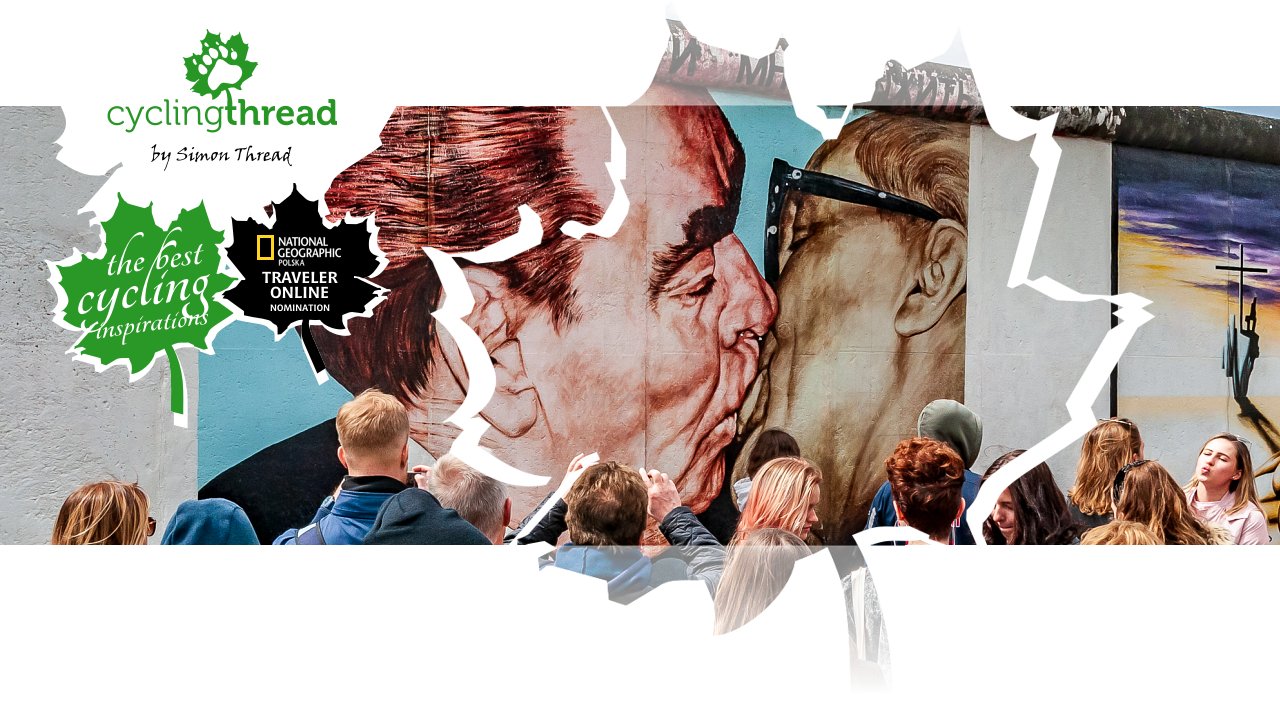
Berlin by bike. The Berlin Wall Trail around the German capital
The Berlin Wall, erected in 1961 to separate West Berlin from the territory of the German Democratic Republic, is one of the most remarkable historical landmarks in Europe. Accompanying it is the Berlin Wall Trail (Berliner Mauerweg), a tourist route for pedestrians and cyclists stretching over 160 kilometers, making it one of the most unique tourist attractions in Europe. The 30th anniversary of the fall of the Berlin Wall, celebrated in November 2019, inspired our group of six to visit Berlin. During the long May weekend, we cycled the route around Berlin, explored part of the modern history of Germany’s capital, and visited some of Berlin’s most iconic attractions.
Route on the map
GPX file (GPS track): cyclingthread.com-berlin-2019.gpx
Berlin by bike - table of contents
- Berlin - what to see in a few days
- A few days for the Berlin Wall Trail
- A brief history of the Berlin Wall
- Berlin Wall Memorial at Bernauer Straße
- The Berlin Wall also divided loved ones and families
- A bridge connecting East and West Germany
- Cycling around the majestic Reichstag
- A somber Gdańsk memento in Berlin
- The Memorial to the Murdered Jews of Europe in Berlin
- Divided into four, Potsdamer Platz
- Famous murals at East Side Gallery
- The diverse route of the Berlin Wall Trail
- A pink snowplow instead of a Russian tank
- Glienicke Bridge – a site of spy exchanges
- Beautiful housing estate for war veterans
- Surprisingly engaging DDR Museum
- The renovated Jewish Museum in Berlin
- Almost 300,000 specimens at the Natural History Museum
- The Neues Museum on the famous Museum Island
- Berlin WelcomeCard - free transport and cheaper museums
- A&O Berlin Hauptbahnhof - a convenient base in Berlin
- Delicious German cuisine in Berlin
- ... and the most popular dish - Currywurst
- Cycling routes around Berlin
- Direct trains from many directions
- Berlin - diverse, open, and... bike-friendly
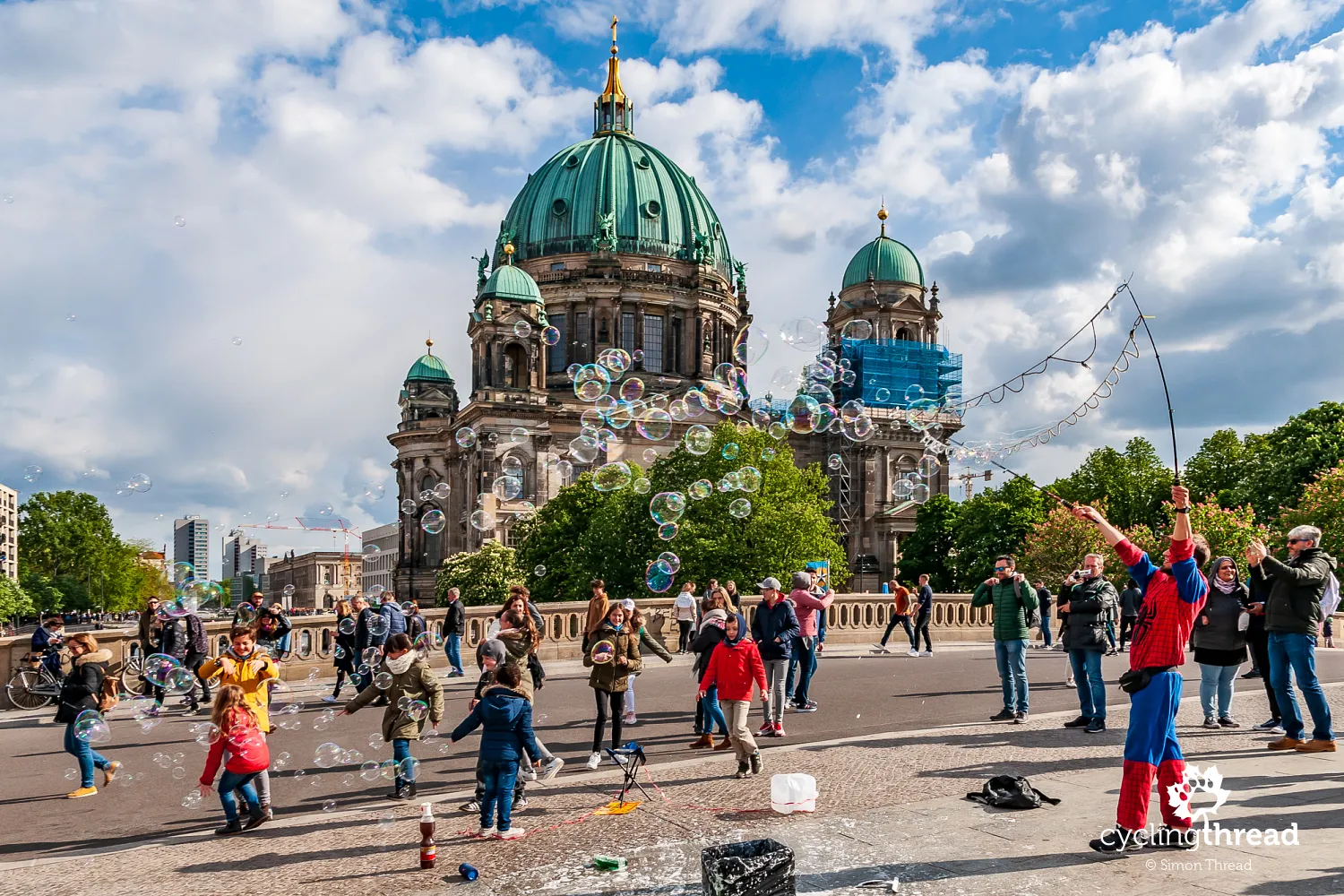
Berlin - what to see in a few days
What can you see in Berlin during a few days' stay? A lot and not much at the same time, but thanks to a bike, Berlin will certainly offer you more than exploring the German capital on foot. Right along the Berlin Wall Trail, you will find Berlin's most famous attractions: the Reichstag building, Brandenburg Gate, Memorial to the Murdered Jews of Europe, Potsdamer Platz, Checkpoint Charlie and the East Side Gallery. In addition to these sites, the route also features urban open-air museums - memorial sites dedicated to the history and events related to the Berlin Wall. The number of fascinating places located just a few hundred meters or more from the route is countless and impossible to explore within just a few days. Among those, we have selected the Natural History Museum, the Neues Museum on the famous Museum Island, the DDR Museum and the Jewish Museum.
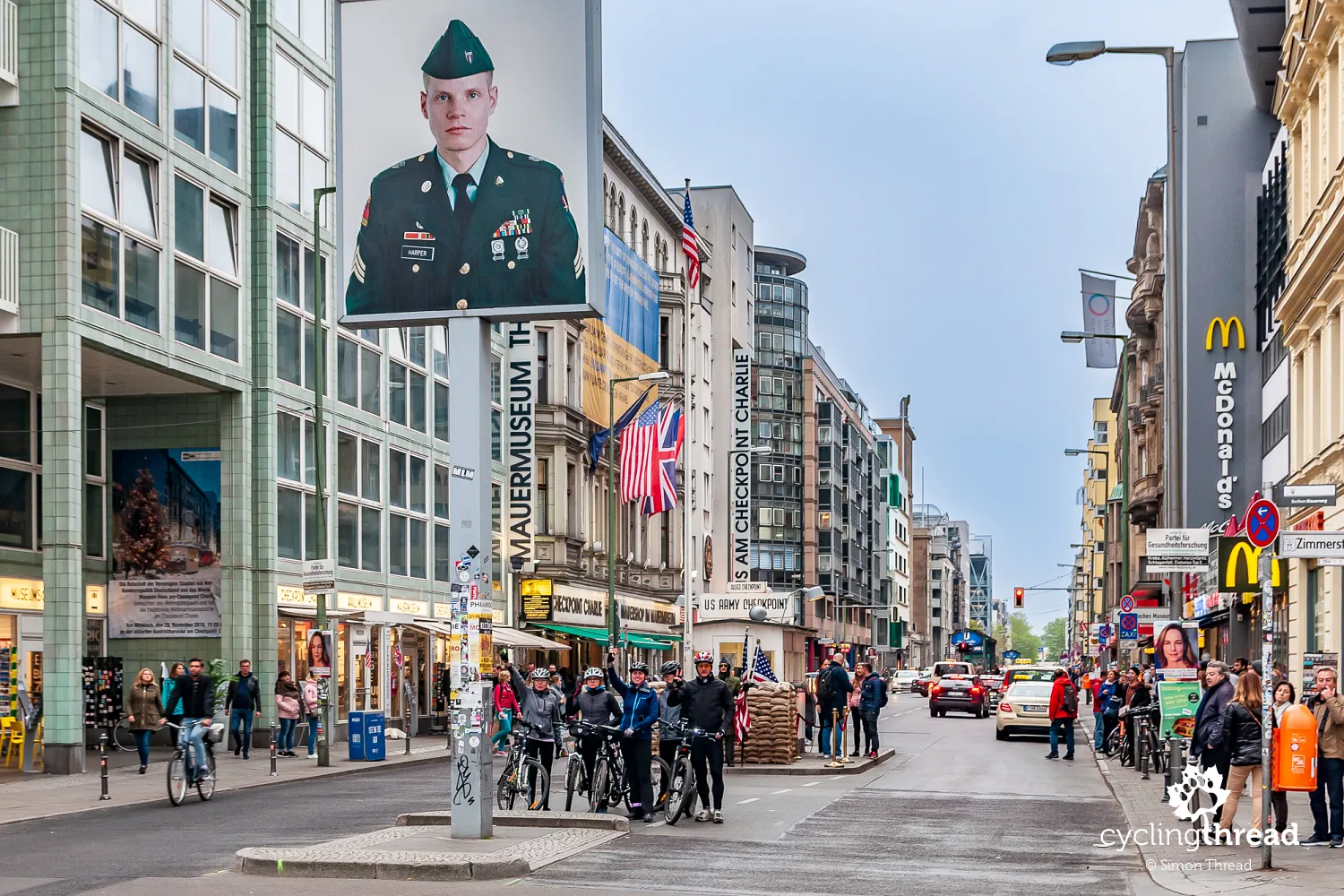
A few days for the Berlin Wall Trail
Exploring Berlin while cycling the entire Berlin Wall Trail is best planned for at least a 4-5 day stay in the German capital. The entire 160-kilometer route can be divided into three, or even four daily stages. Shorter distances allow you to explore places along the way while saving time and energy for the afternoons and evenings, which can be spent discovering the city's culinary and entertainment scene. When planning your cycling stages, keep in mind that the section through Berlin's city center takes significantly longer to cover. On one hand, this is due to the nature of cycling in a large city - traffic lights and a busy cycling infrastructure, of course. On the other hand, the slow pace through the city center is also caused by the sheer number of attractions that invite you to stop and immerse yourself in the unique history of Berlin. A history that is presented here in such a rich and engaging way that it's impossible to absorb every information board and learn about the circumstances of each archival photo displayed along the route within just a few days.
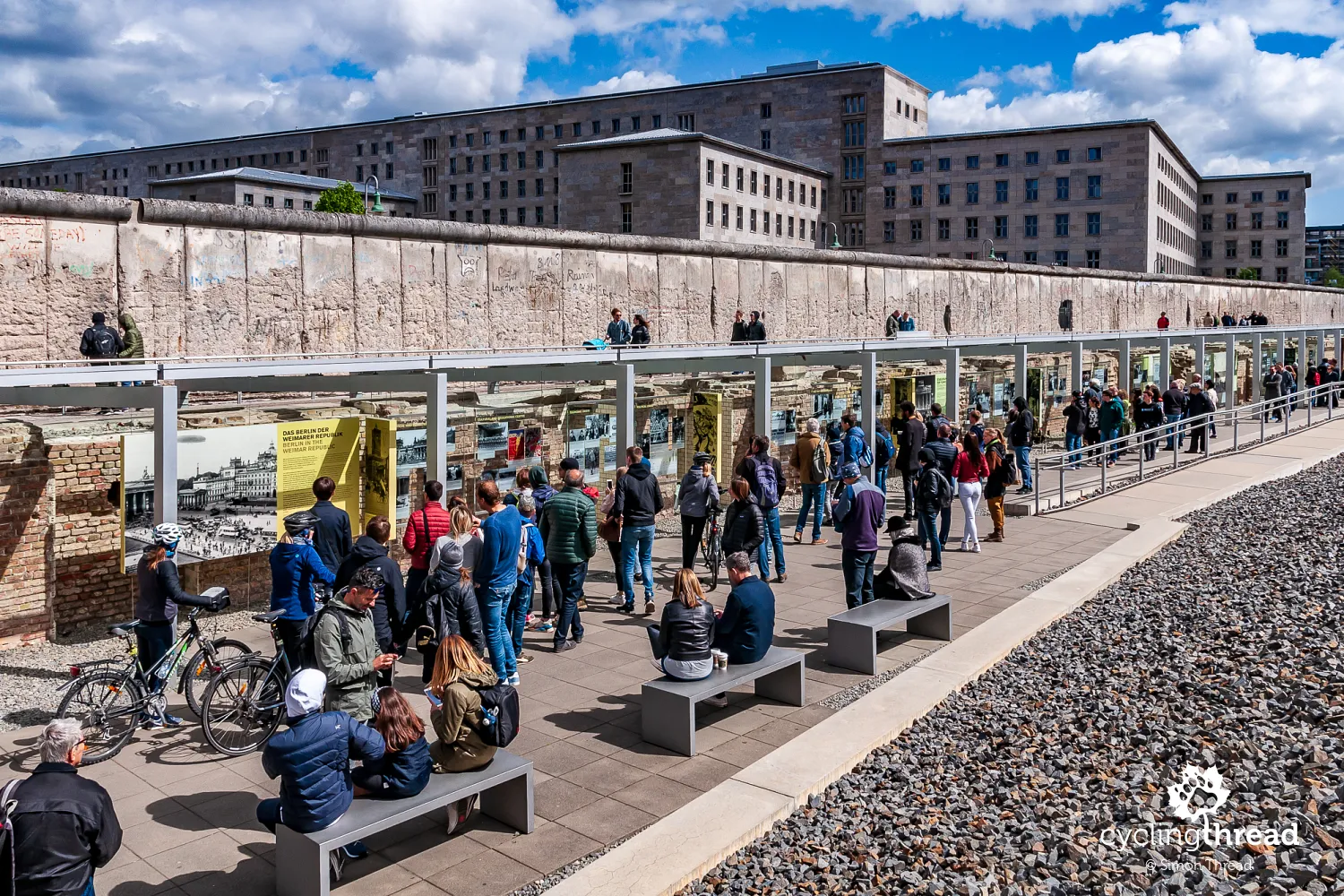
A brief history of the Berlin Wall
The first wall in Berlin, which initially served only an administrative function, was built after World War II when, as a result of peace treaties signed in Yalta, Berlin was divided by the Allies into four occupation sectors. Three of them (French, British, and American) formed the western part (West Berlin) with a status similar to that of a free city. The two parts of Berlin were separated by a demarcation line, with barbed wire fences in forested areas and barriers in urban zones. However, since such fencing could not stop the mass migration to the Federal Republic of Germany, in 1952 the authorities of the German Democratic Republic built a fence along the entire inner German border, and in 1961 began constructing the actual Berlin Wall.
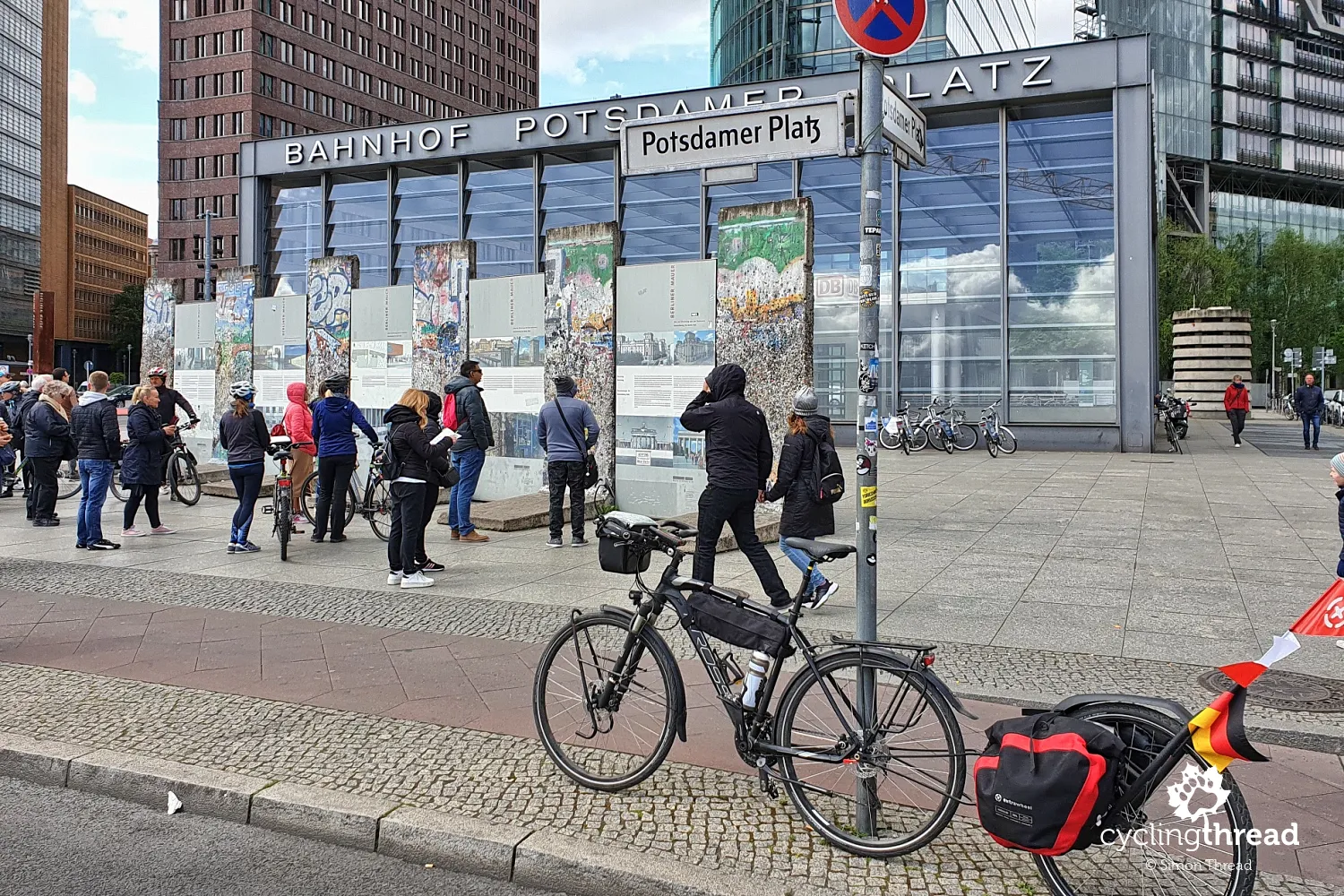
The Berlin Wall began to rise on the night of August 12-13, 1961. On that day, more than 15,000 officers from various East German uniformed formations (police, border guards, self-defense units) blocked roads and railway tracks, dividing Berlin into two parts. Metro stations located in West Berlin but on lines originating and ending in East Berlin were closed. Tracks were even dismantled, leaving East German trains on the western side. Over the following weeks, security measures were reinforced along the entire border of West Berlin, which today can be cycled around with ease. The ruthless division of Berlin became a reality and lasted for the next 28 years.
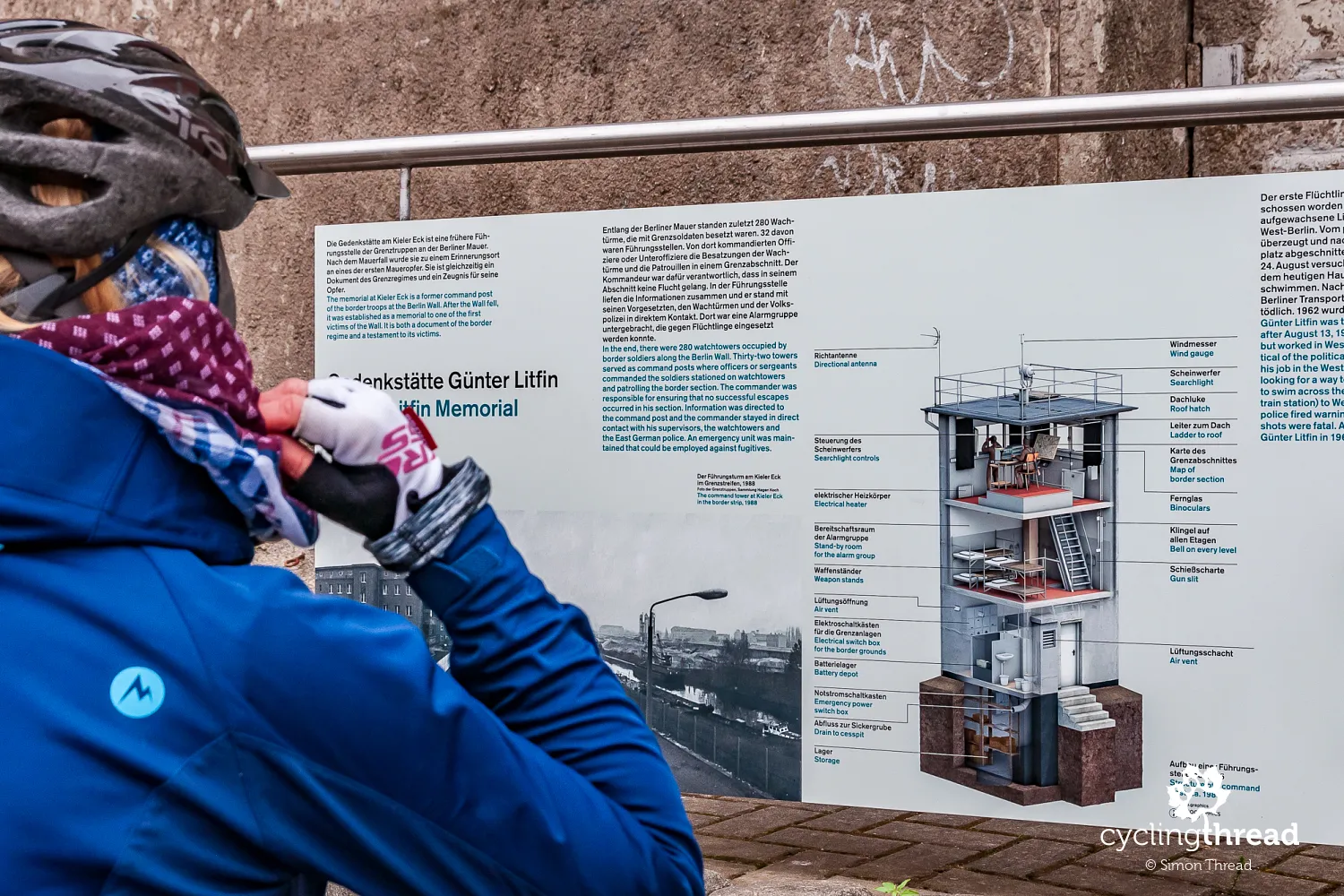
Berlin Wall Memorial at Bernauer Straße
Among the open-air exhibitions, the largest is the Berlin Wall Memorial (Gedenkstätte Berliner Mauer) at Bernauer Straße. A several hundred meter stretch of land around the Wall has been preserved and its former layout reconstructed. The location of the first (of two) walls of the Berlin Wall is marked with symbolic rods, and next to it stands the Window of Remembrance - a wall displaying photos of 130 victims, mainly escapees from East Berlin who lost their lives at the hands of East German border guards. Nearby, there is a "gallery" of concrete wall segments from various parts of Berlin, along with many illustrated information boards. This place alone can hold your attention for dozens of minutes as you stroll between the displays, photos, and historical memories.
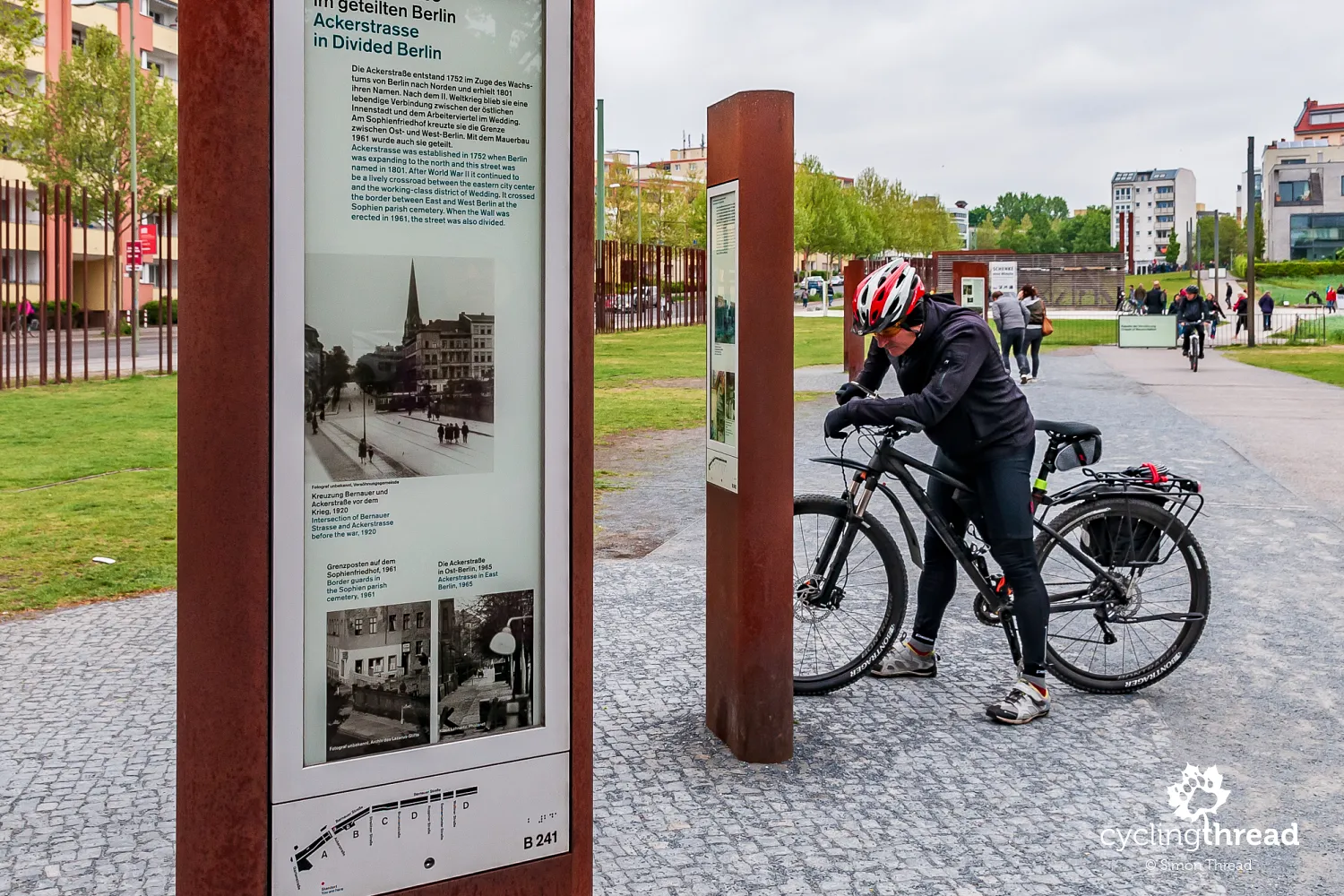
Several decades ago, the Protestant Church of Reconciliation stood here, but it was demolished by the authorities of the German Democratic Republic in 1985. Unfortunately, the border between East and West Berlin ran right next to it. After the Wall was erected, the congregation from West Berlin lost access to it, and from 1961, it stood unused in the no-man's land. Today, in its place stands the Chapel of Reconciliation, featuring a modern architectural design. It is also worth noting the distinctive sculpture of two embracing figures on the lawn near the chapel. Berlin is home to one of five copies of the "Reconciliation" sculpture by the Brazilian artist - the others can be found in Coventry, United Kingdom, and Hiroshima Japan. Opposite the chapel is an information point and a historical documentation center with a multi-story observation tower.
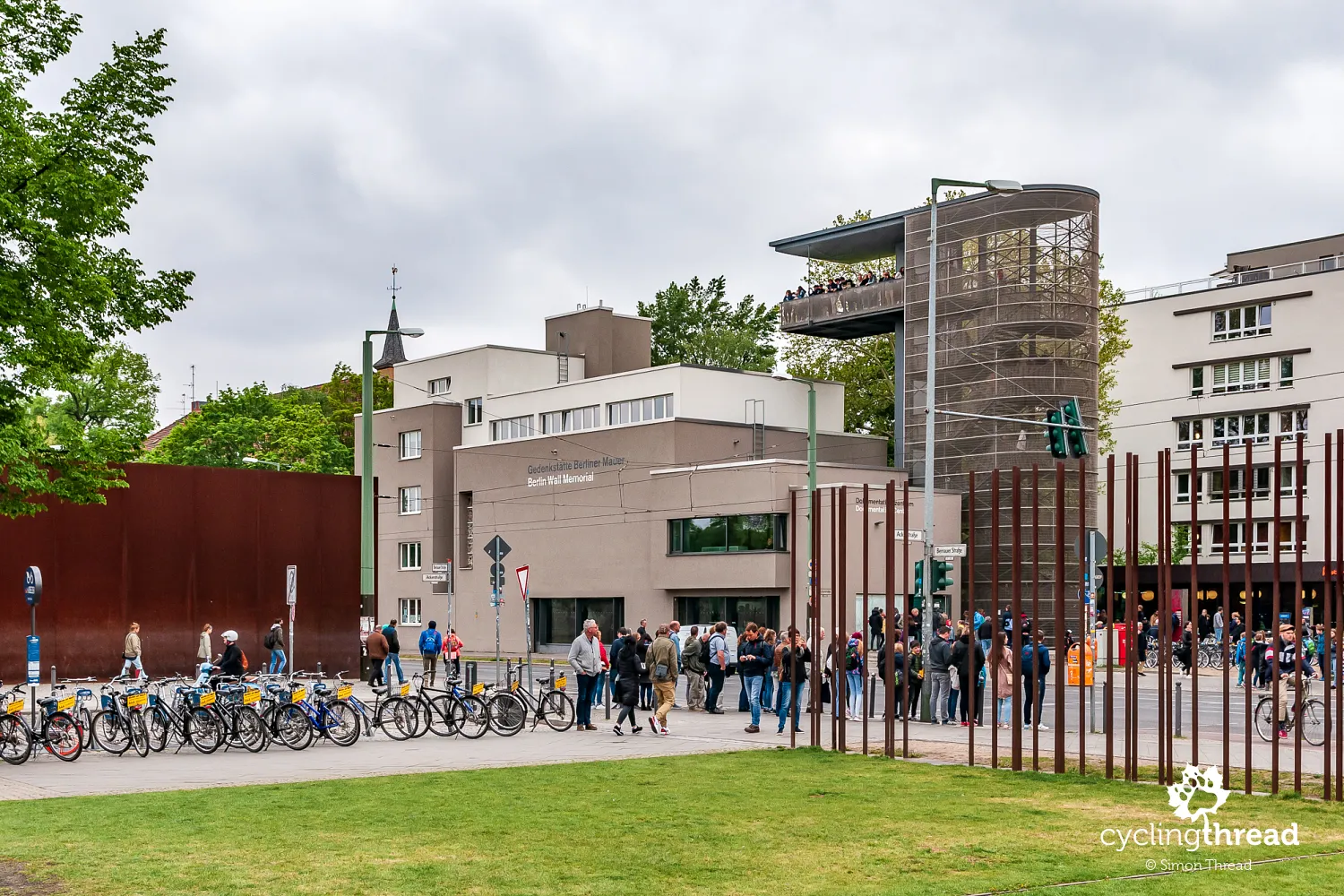
The Berlin Wall also divided loved ones and families
One of the photographic exhibitions at the memorial site on Bernauer Straße features poignant photos showing a divided family on their wedding day. Instead of hugs and congratulations, the newlyweds had to settle for eye contact with their tearful parents waving from a window on the other side of the artificial, political border. They were lucky, as thousands of other windows in buildings directly along the border were bricked up to prevent escape and smuggling from West Berlin. All such attempts were strictly punished - during the division of Berlin, as many as 75,000 people were prosecuted by the East German court for attempting to flee to West Germany.
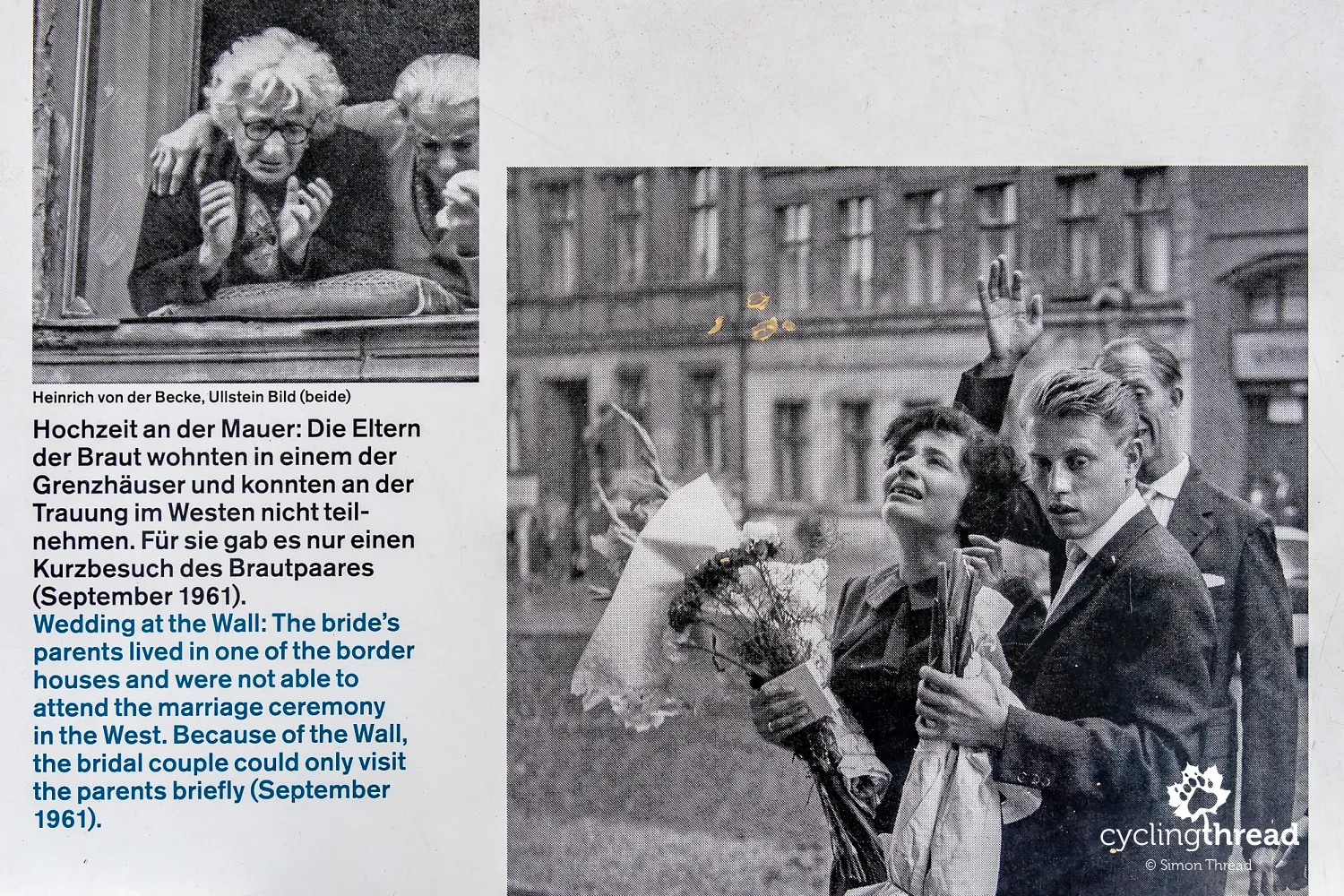
A bridge connecting East and West Germany
A photo taken by tourists from China does not fully capture the uniqueness of the place where we are standing. This is the bridge over the Spree River, named after Marie Elisabeth Lüders, a women's rights advocate in Germany. The bridge is part of the modern government complex built on both sides of the Spree and symbolically connects East and West Germany. The structure is about 100 meters long and consists of two levels, with the lower one accessible to everyone. Interestingly, the construction of the Marie Elisabeth Lüders building behind us was supposed to be completed in 2012, but due to structural defects, it is still ongoing - at least until 2021. The building opposite, named after Paul Löbe, the honorary president of the first German Bundestag, houses the Bundestag library behind its distinctive round-shaped windows.
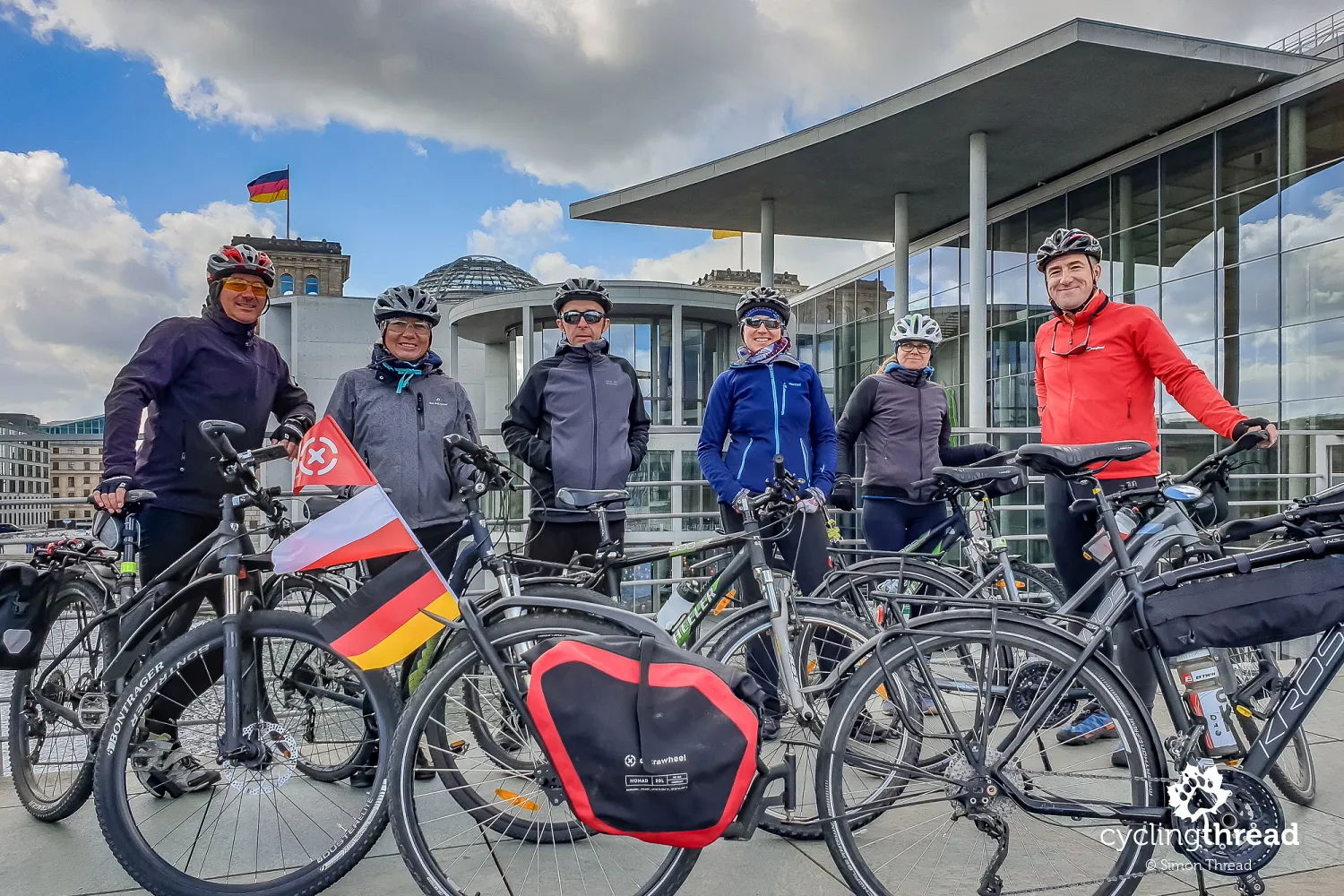
Cycling around the majestic Reichstag
The highlight of the cycling route around the former West Berlin is passing under the massive Reichstag building - one of Berlin's most iconic landmarks. Built at the end of the 19th century, it served as the seat of the German Empire's parliament and the Weimar Republic until 1933. Renovated after Germany's reunification in 1998, it once again became the meeting place of the Bundestag of the Federal Republic of Germany, which was previously located in Bonn. Every day, up to 8,000 people visit the glass dome of the Reichstag - a bold reconstruction of the earlier dome, which was blown up in 1954 due to concerns about the structural integrity of the building. Light entering through the glass panes of the dome illuminates the parliamentary debates with the help of 360 mirrors. However, something else caught our attention here.
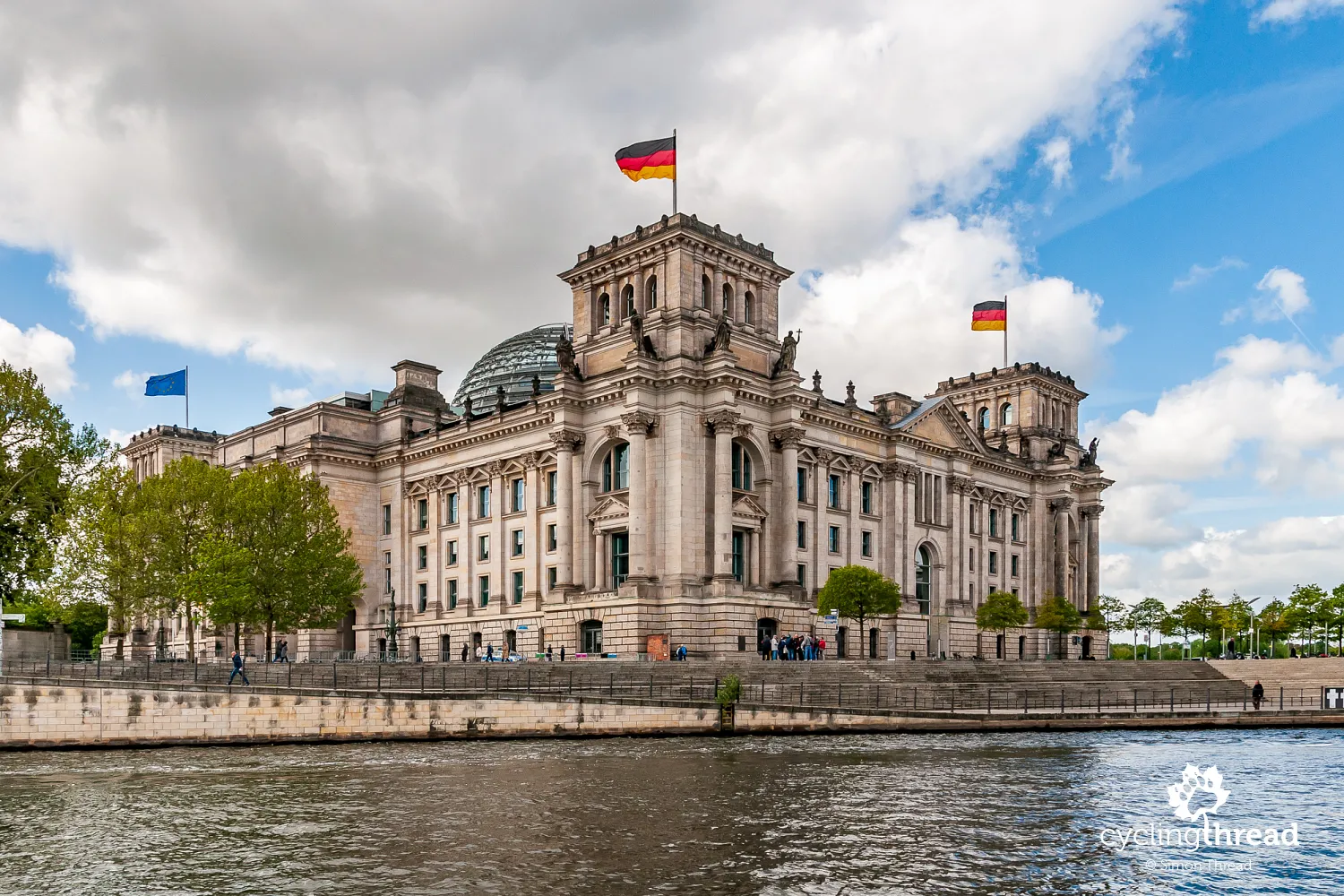
A somber Gdańsk memento in Berlin
That small, reddish-orange spot in the middle of the above photo, just below the Reichstag building, is a piece of the Gdańsk Shipyard wall, placed here 20 years ago to mark the tenth anniversary of the fall of the Berlin Wall. The unveiling ceremony was attended by Polish President Bronisław Komorowski and German Chancellor Angela Merkel. Right below it, we found a lantern with stickers from the Great Orchestra of Christmas Charity and the name of Paweł Adamowicz, the mayor of Gdańsk (on the Baltic Sea section of the EuroVelo 10 route), who was tragically murdered earlier this year. Our friends quickly cleaned the lantern of old candles and lit a new one. Leaving Berlin, we left behind a flickering light in memory of our mayor.
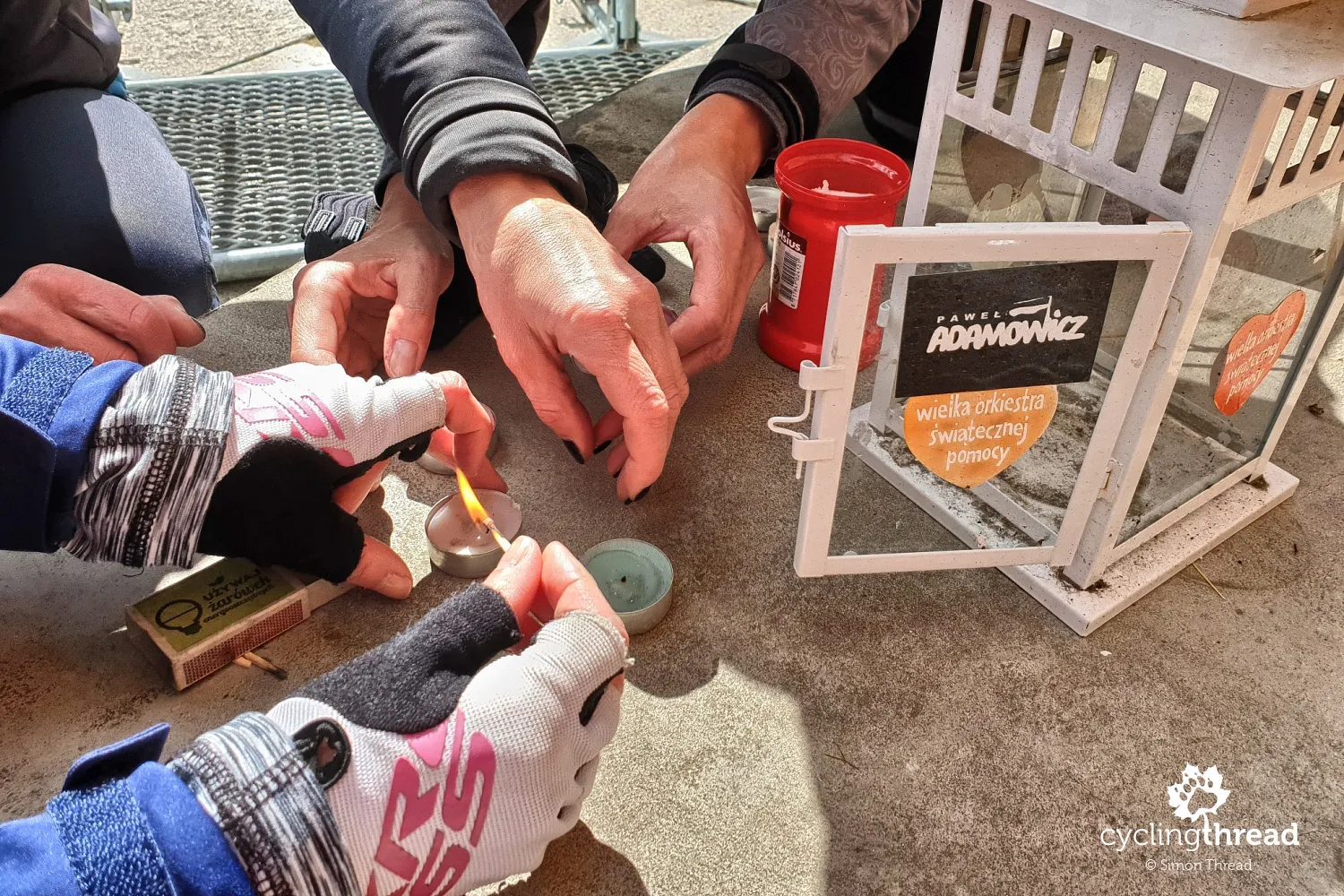
The Memorial to the Murdered Jews of Europe in Berlin
Just a few hundred meters away stands another extraordinary monument from the past. Although not directly related to the Cold War history of the Berlin Wall, it is impossible not to stop here and be overwhelmed by its scale and significance. The Memorial to the Murdered Jews of Europe consists of 2,711 concrete blocks of varying heights, arranged in rows on uneven ground. They commemorate the Jewish victims murdered during World War II and serve as a poignant reminder of the tragic wartime events in German society. The location and size of the memorial further emphasize the importance that Berlin and Germany attribute to this unique monument. Located just a short walk from Brandenburg Gate, the memorial frequently appears in the media due to controversial behavior by visitors. When visiting, it's worth remembering that the memorial also includes an underground exhibition area.
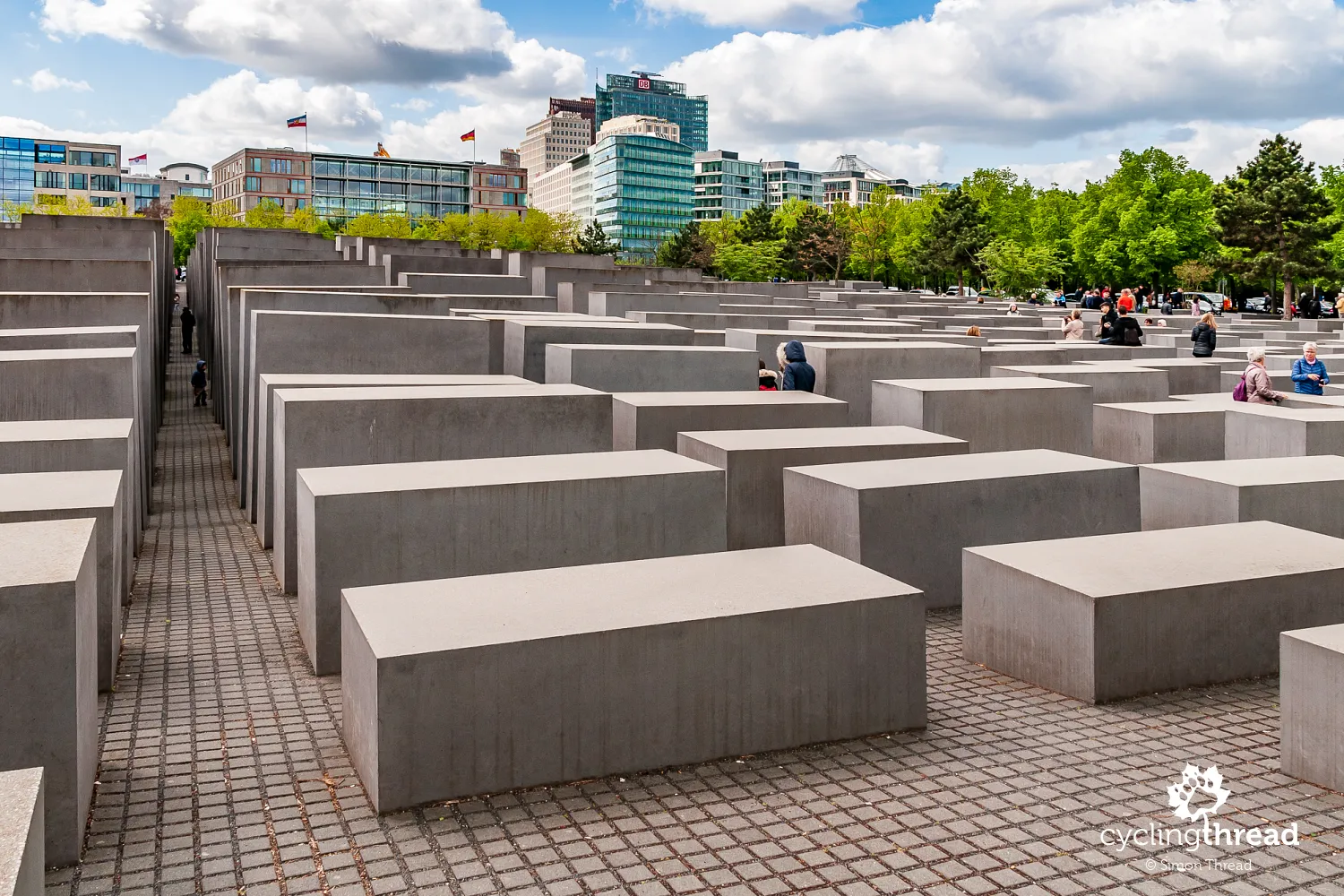
Divided into four, Potsdamer Platz
Another well-known spot in Berlin that the Berlin Wall Trail crosses is Potsdamer Platz. Deserted for decades due to the city's division, it hosted the grand 1989 concert "The Wall" celebrating Germany's reunification. The event attracted artists such as Roger Waters, Scorpions, Cyndi Lauper, Sinéad O’Connor, and Bryan Adams. Later, Potsdamer Platz became the site of extensive construction projects, during which four new owners redesigned and developed it. One of them was the Sony Corporation, which established its European headquarters here, and another was Daimler, which gave its building futuristic and unique shapes. Each of the many buildings currently occupying the square is remarkable. While some consider Potsdamer Platz a brilliant example of building a new urban space from scratch, others argue that the result lacks the authentic, vibrant life characteristic of Berlin.
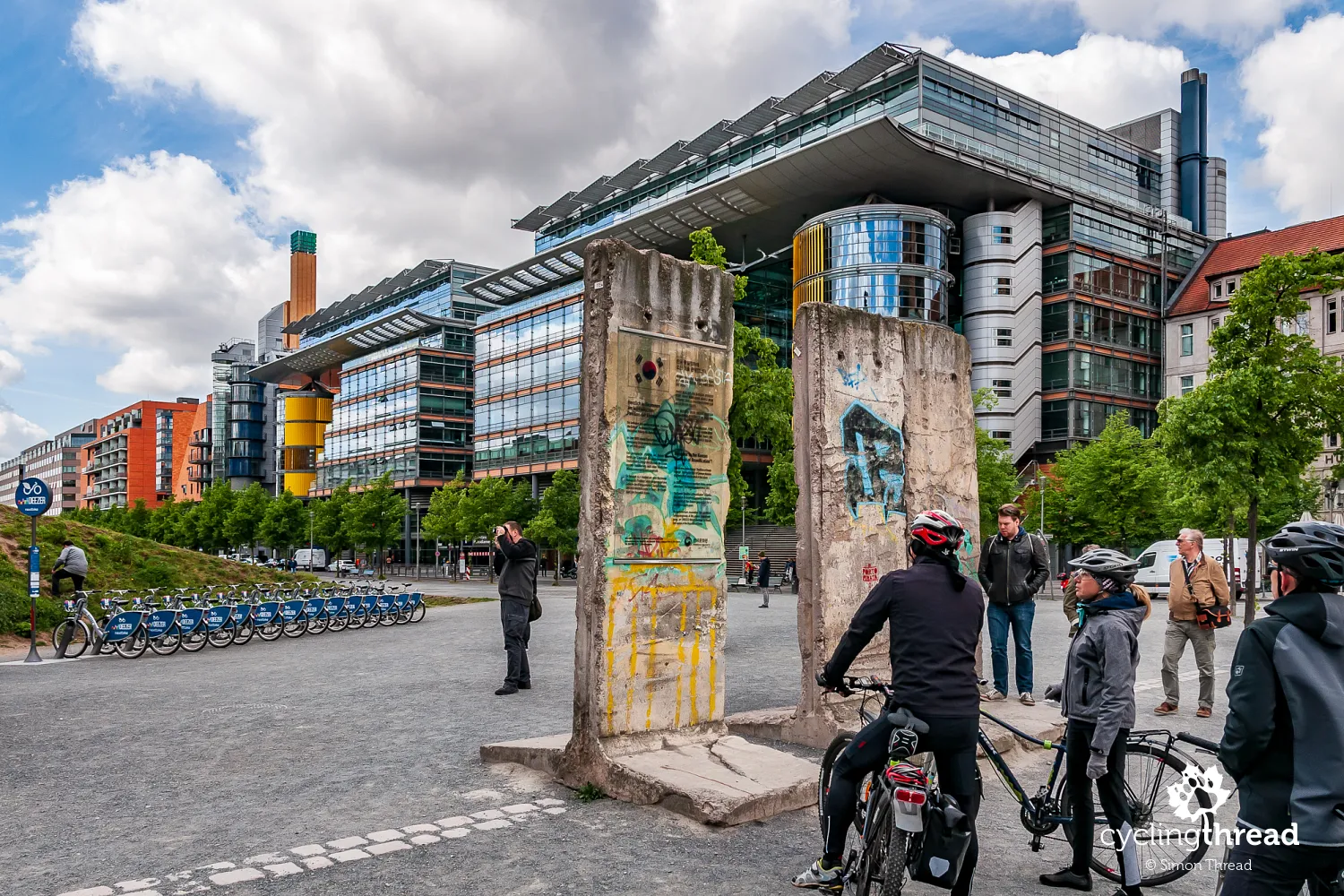
Famous murals at East Side Gallery
A very popular spot along the route is the famous East Side Gallery. This nearly 1.5-kilometer preserved section of the Berlin Wall is covered with over a hundred murals, created by artists from Germany and beyond, right after the Wall fell in 1989. Undoubtedly, the most famous mural depicts the embrace of Leonid Brezhnev and Erich Honecker on the 30th anniversary of the founding of the German Democratic Republic in 1979. Due to easy access to this unique open-air gallery, many of the murals have suffered vandalism, including Dmitri Vrubel's iconic painting. However, it was officially restored in 2009 by the artist himself. Every day, crowds of tourists gather around it, making it possibly the most photographed piece of contemporary art in Berlin.
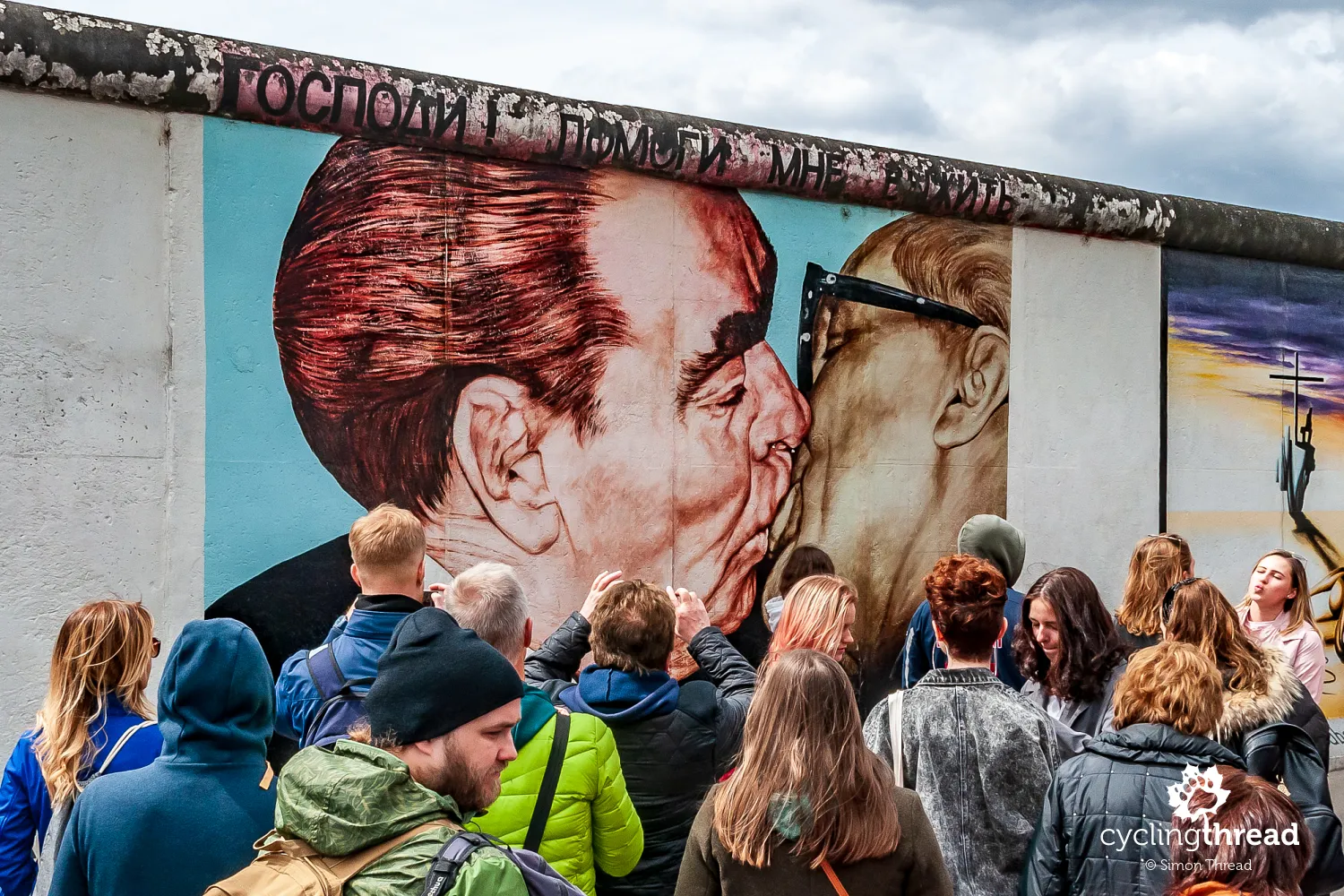
The diverse route of the Berlin Wall Trail
The Berlin Wall Trail was first established in 1990 by members of ADFC. It follows the exact former border that separated West Berlin from the territory of the German Democratic Republic, including approximately 50 kilometers within Berlin itself. Besides its historical and cultural significance, the route's great diversity was what drew us to Berlin for a long May weekend. The cycling route through Berlin passes not only through strictly urban areas, famous landmarks, and densely developed suburbs but also escapes into green areas, parks, and forests to the north, south, and west of the city. It winds along rivers, canals, and lakes surrounding the German capital. Just about 10 kilometers separate Brandenburg Gate in central Berlin from the first longer stretches of the Berlin Wall Trail meandering through quiet suburban landscapes. No other cycling route in Europe combines such rich historical and educational value with pure recreational enjoyment.
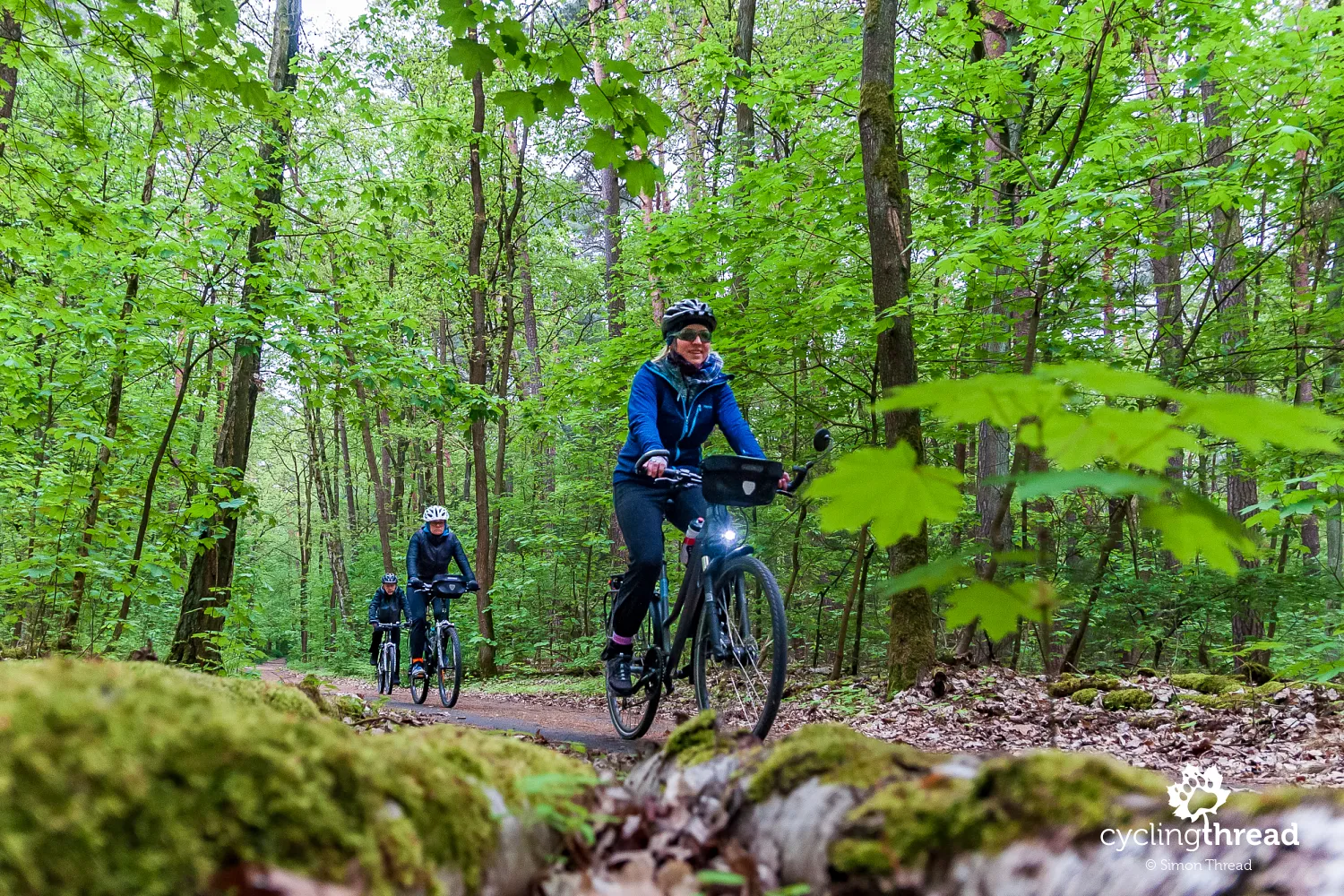
The green areas around Berlin lack spectacular attractions and the loud crowds of international tourists. Reminders of the Berlin Wall that once ran here include the last remaining guard towers and engineering structures. Orange poles mark historically significant sites, often commemorating tragic events – the deaths of escapees from East Germany. Many perished trying to flee west through forests, swim across rivers and canals, dig tunnels, or hide in vehicles. Among them was a Pole, Franciszek Piesik, who likely drowned while attempting to swim across Nieder Neuendorfer See, a lake that once marked the border of West Berlin. Today, no wall stands on these green landscapes – nature has taken over, slowly erasing the former demarcation lines with its quiet persistence.
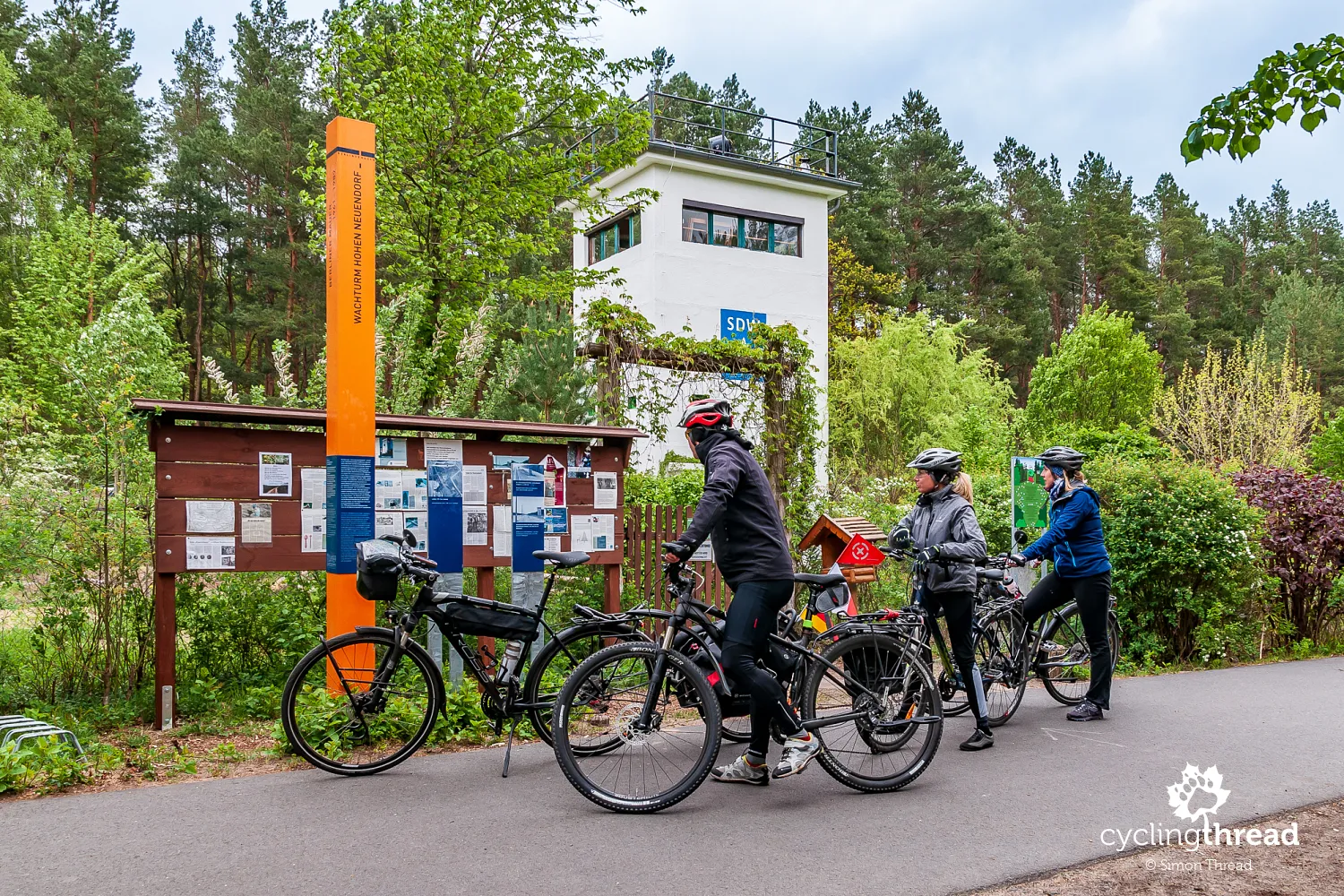
A pink snowplow instead of a Russian tank
A few hundred meters from the Berlin Wall Trail, near the former border crossing along the fastest road connection between West Berlin and the western part of Germany, stands an unusual vehicle on a high pedestal. The crossing, once known as Checkpoint Bravo, was guarded on the East German side by a Russian T-34 tank, with its barrel aimed, of course, at West Berlin. After Germany's reunification, the tank was replaced with a snowplow during an artistic performance. Painted pink, the machine humorously reflects Berliners' attitude towards their past.
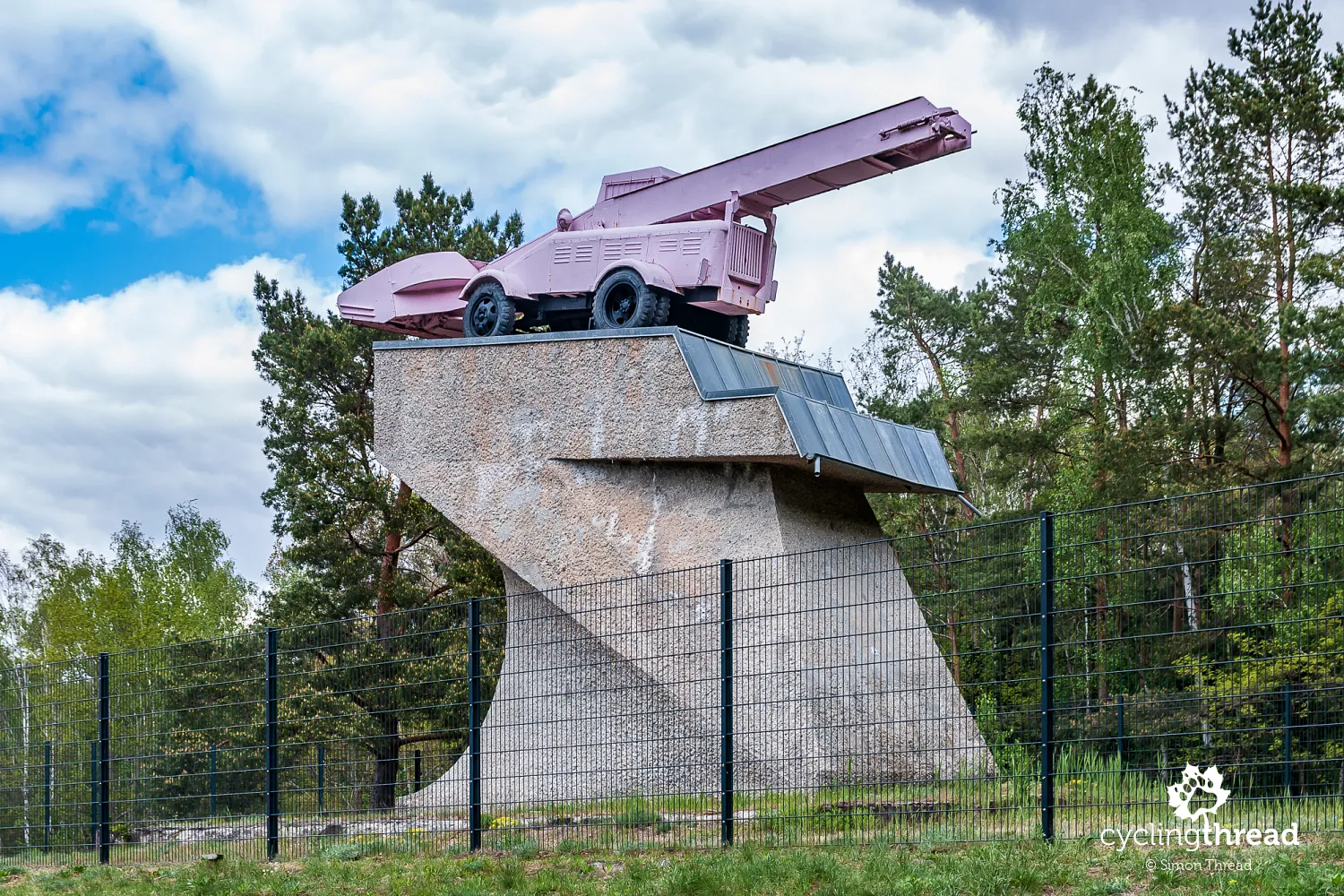
Glienicke Bridge – a site of spy exchanges
At the farthest point from central Berlin on the route lies Glienicke Bridge, spanning the Havel River, which separates Berlin from Potsdam. The bridge once marked the border of West Berlin, and to this day, it remains painted in two different shades of green, symbolizing its historical divide. For decades during the Cold War, this bridge was the site of secret spy exchanges between the two sides, most of which were kept classified. During one of the most well-known exchanges in Poland, Marian Zacharski, a Polish spy working for the People's Republic of Poland, was returned to his homeland in exchange for five other Polish agents working for the United States. From here, it is less than three kilometers to the center of beautiful Potsdam.
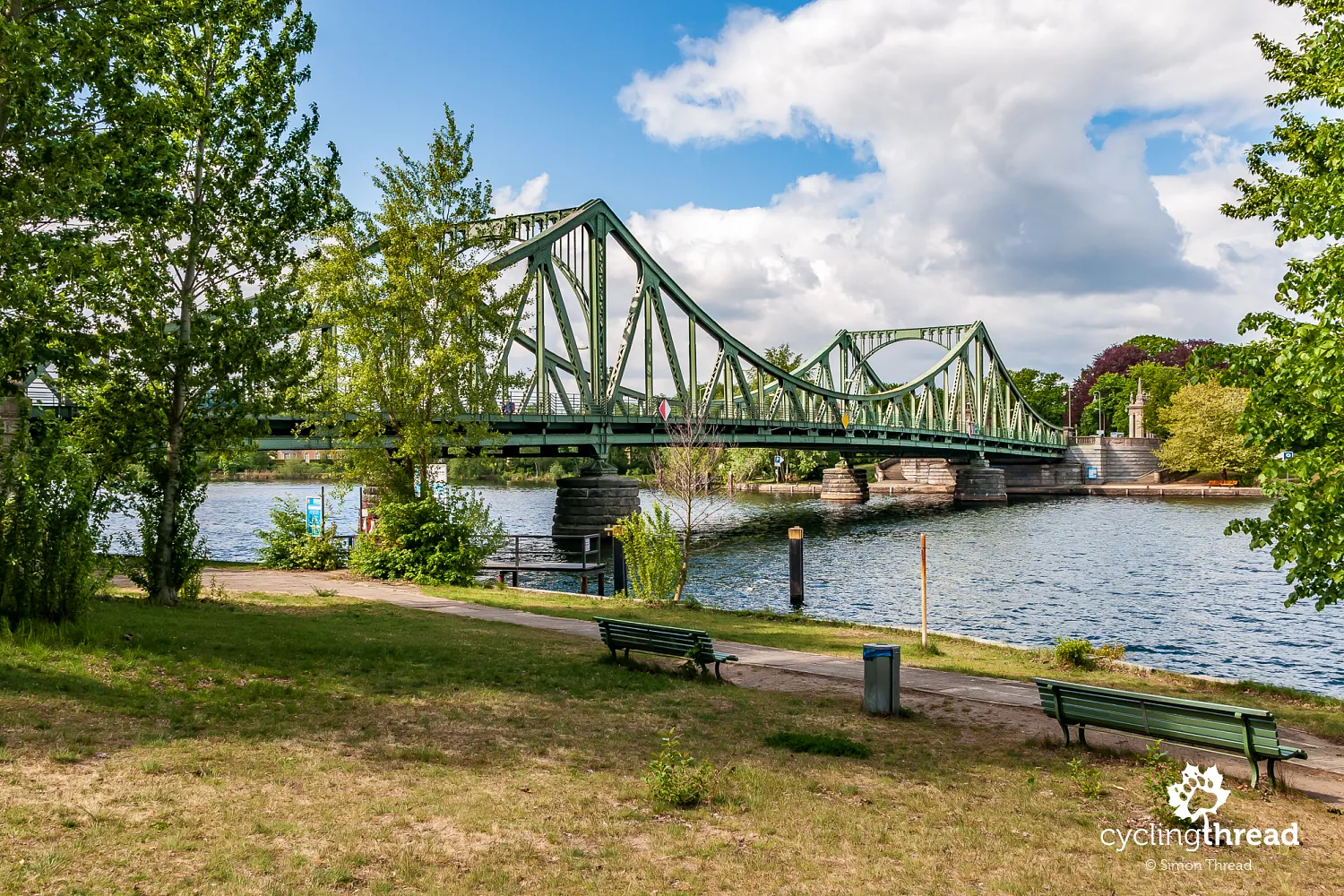
Beautiful housing estate for war veterans
On the opposite end of our cycling trip along the Berlin Wall Trail, we came across another fascinating place - an estate of several dozen two-story houses built in a pre-war style. A quick check on the map provided the answer - it is the Invalids' Estate, constructed in 1938. The estate continues the legacy of the Invalids' House, one of the first facilities of its kind in Europe, established in central Berlin on today's Invalidenstraße in 1748 during the reign of Frederick I. The right to reside here is granted to German war veterans with at least a 50% disability rating.
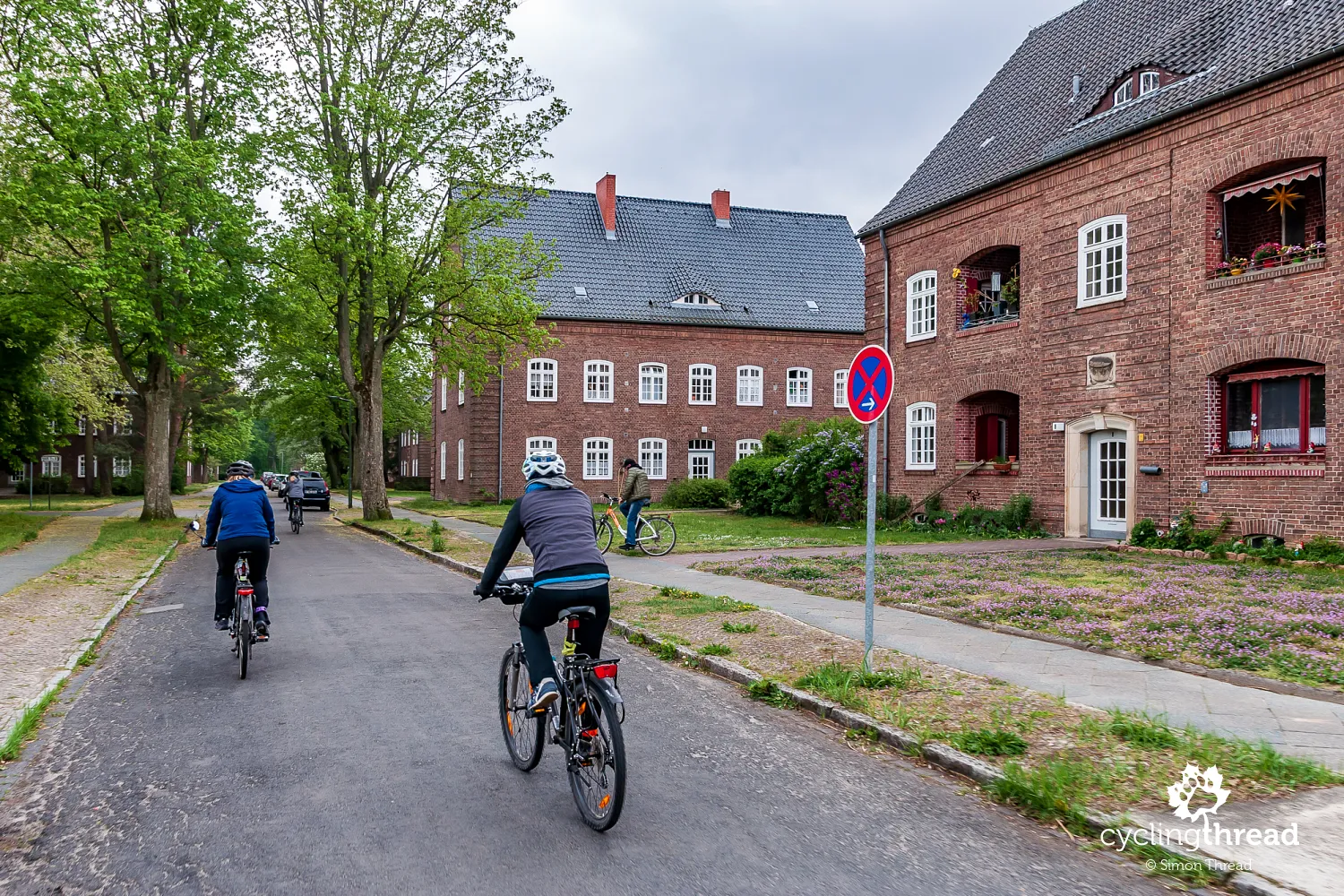
Surprisingly engaging DDR Museum
Visiting Berlin, one should definitely explore at least one of the museums dedicated to the Berlin Wall and West Berlin. Among them is the DDR Museum, located in a building by the Spree River, directly opposite the impressive Berlin Cathedral. Expecting a gloomy, communist atmosphere, we instead found an engaging place that vividly portrays the German socialist republic. Despite using relatively simple multimedia techniques, the museum captivates visitors - encouraging them to open drawers and cabinets, to peek behind every little door and window, uncovering screens, displays, and audio recordings.
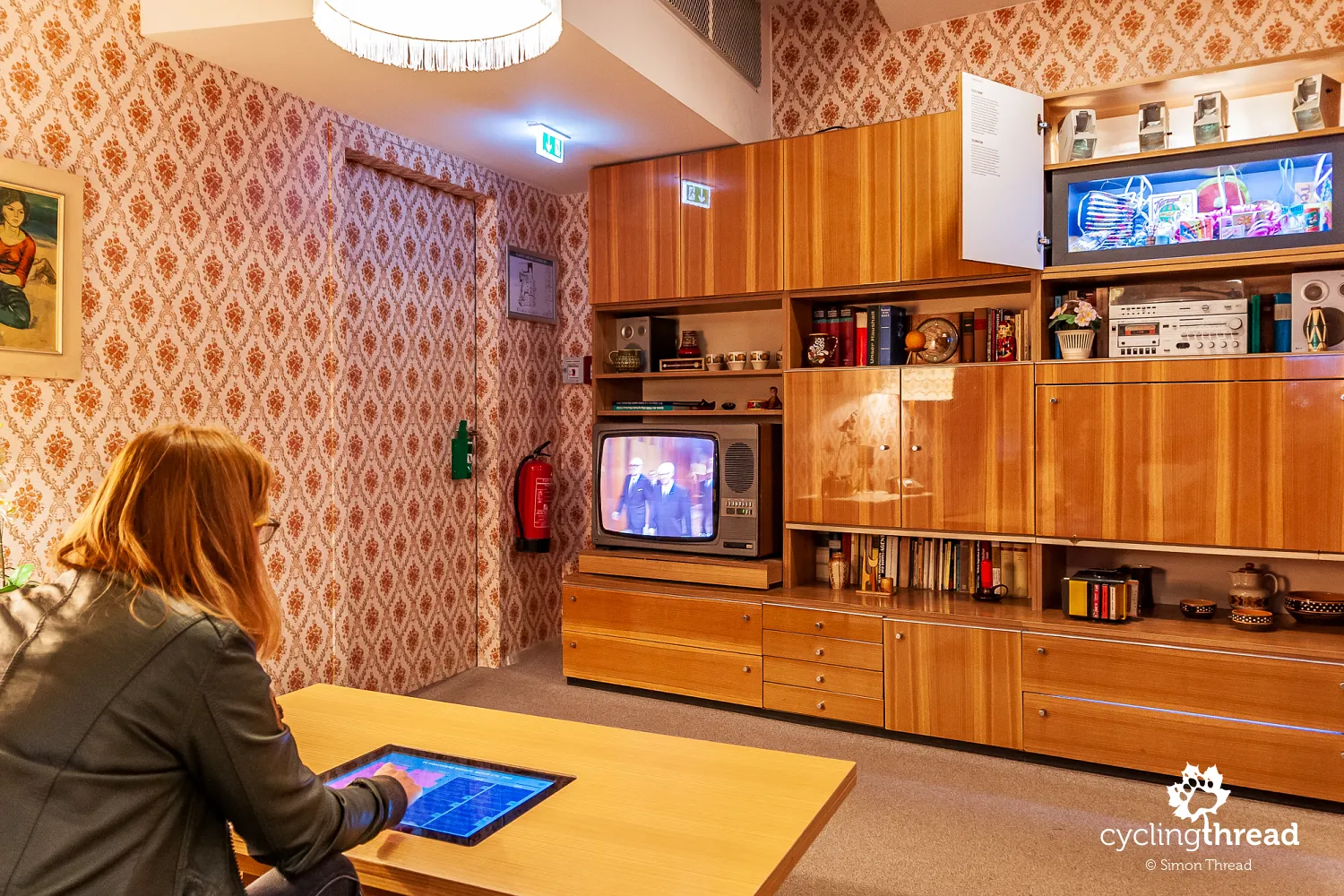
The main part of the exhibition, resembling a miniature prefabricated housing estate, presents life conditions in East Germany. It covers work, culture, leisure, sports, and, of course, politics - everything that shaped life in the former East Berlin. Visitors can even take a simulated Trabant ride through the city streets. Moving on through an elevator-styled room, you enter a typical East German apartment, which brings back memories of childhood years. There's also a typical wall unit with a TV showing selected programs from the 1970s, and in a humorous mirror-screen, visitors can see themselves dressed in DDR-era outfits – even the women's attire ;-)
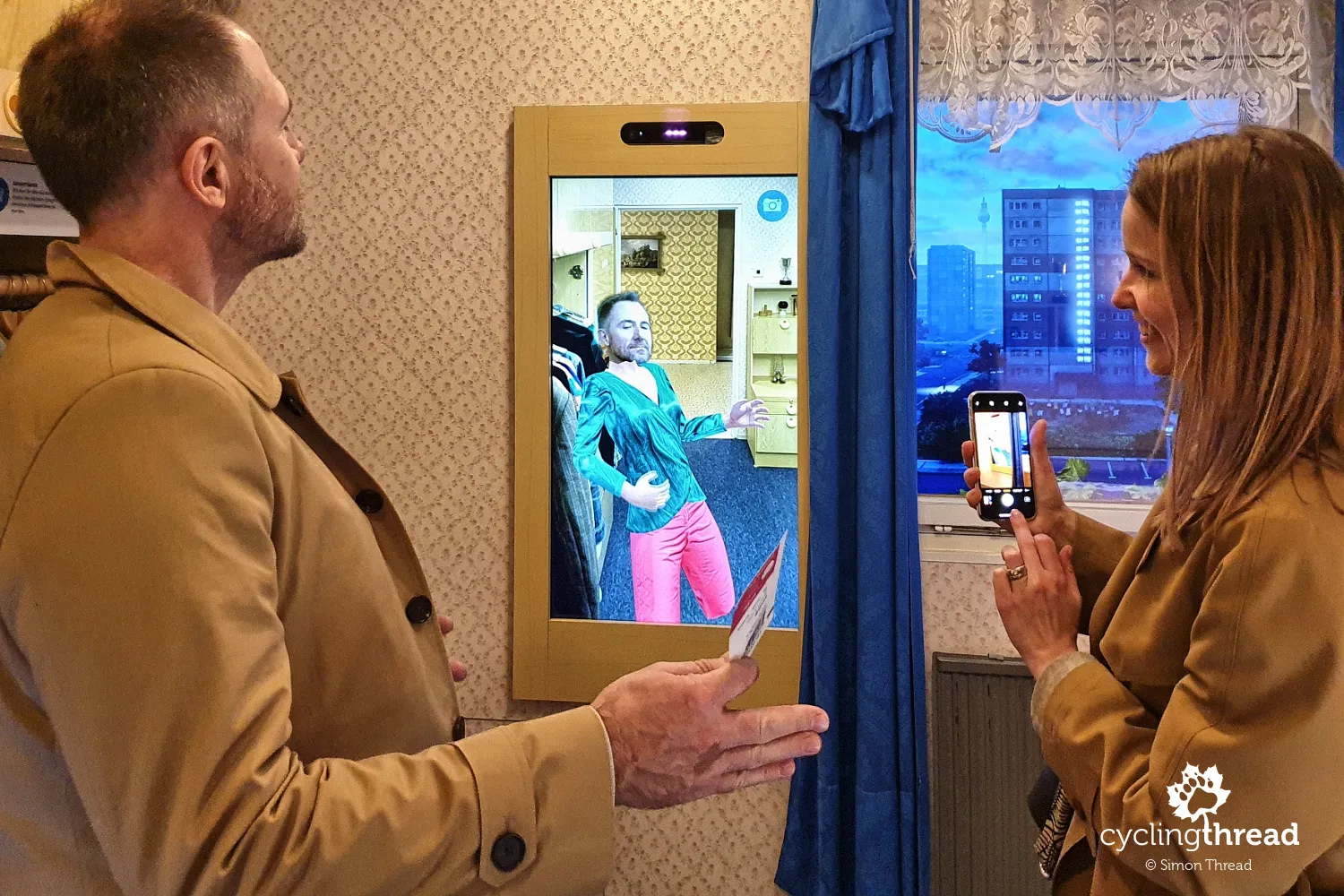
The renovated Jewish Museum in Berlin
On the other end of our museum experience in Berlin was the Jewish Museum, which has received many excellent reviews. Unfortunately, due to ongoing renovations of the building housing the main exhibition, visitors can currently only explore the part designed by the renowned architect Daniel Libeskind. We found this out while touring the space, which in its current form resembles an elaborate art installation more than a traditional museum. We are still unsure if our confusion was due to a lack of proper research or the fact that we were not informed of the renovations when purchasing our tickets. We advise checking whether the renovation allows for the full exhibition to be visited to avoid the disappointment and wasted time that we experienced.
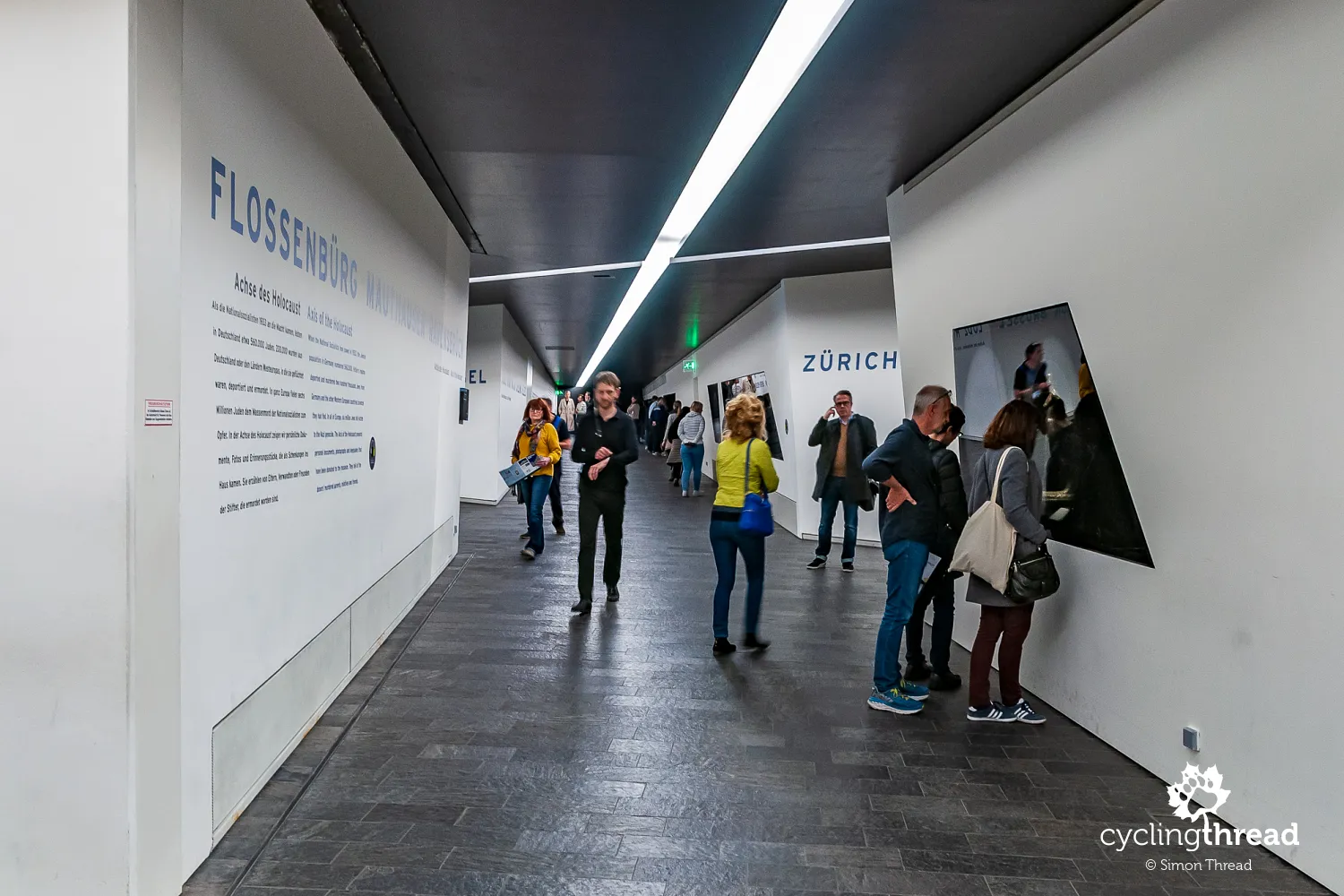
Almost 300,000 specimens at the Natural History Museum
We also remember a few interesting spots from the two other museums we managed to visit during our Berlin trip. From the very popular Natural History Museum, we were particularly impressed by a vast hall filled with 276,000 (!) animal specimens, located in the recently renovated eastern wing of the museum. Families with children spent much time in the dinosaur exhibit, while we were captivated by the mineral collections from around the world. Although... we felt the presentation could have been more informative.
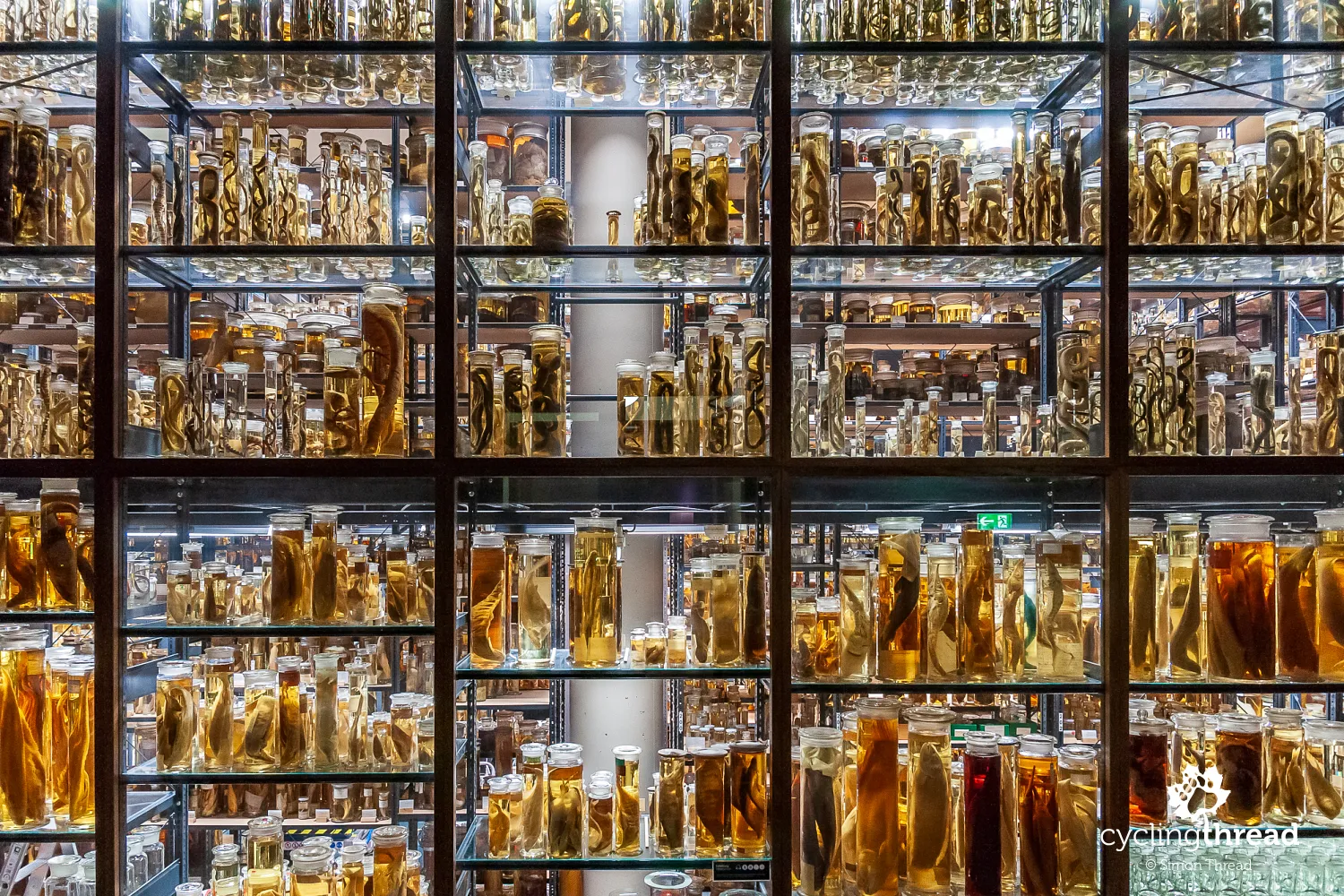
The Neues Museum on the famous Museum Island
Among the sites on the famous Museum Island where we managed to get tickets without waiting in long queues was the Neues Museum. Reopened in 2009 after extensive war damage, it showcases art and archaeological collections from prehistoric times, antiquity, and the early Middle Ages. Admiring the remarkable exhibits, including the famous bust of Nefertiti, the beautiful queen of Egypt, it's worth noting the extraordinary design of the museum's halls. Interestingly, architect David Chipperfield's project both received the European Union Prize for Contemporary Architecture – the Mies van der Rohe Award – and faced criticism from the Berlin Art Historians Association, which ironically proposed listing Berlin and Museum Island as endangered UNESCO World Heritage sites. Clearly, the layout of the museum spaces at the Neues Museum did not appeal to everyone in Berlin.

In the halls of the vast Neues Museum, we noticed a display case containing human skulls and bone fragments. It turned out to be one of those "links" that often surprisingly connect our various trips. This time, it was an exhibition dedicated to a battle that took place around 1300 BC (!) near Neubrandenburg, from which we had just arrived in Berlin after spending a few days exploring the Mecklenburg Lakeland. The Battle of the Tollense River, given its occurrence - 100 years before the Trojan War! - remains an unresolved episode in the history of our part of Europe. The speculations of historians, new discoveries, and reports from ongoing research read like excellent historical prose. I love such stories.
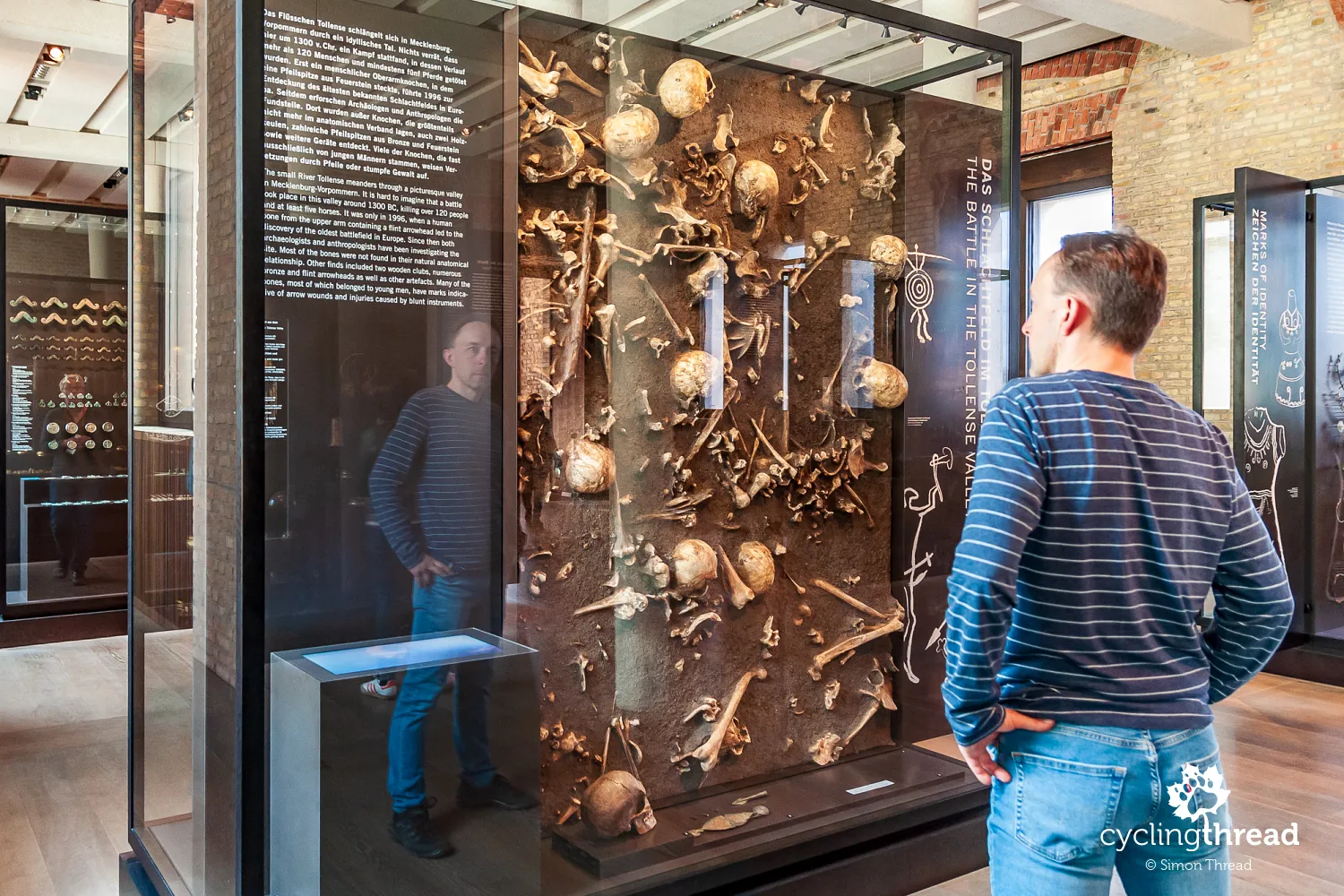
Berlin WelcomeCard - free transport and cheaper museums
When it comes to museums, it's worth remembering Berlin's "tourist card." By purchasing the Berlin WelcomeCard, you can reduce the cost of admission to many museums and also travel for free on public transportation in Berlin, including the metro and S-Bahn trains. If you're planning to explore Berlin, such a purchase makes financial sense and saves time on buying tickets for public transportation. However, before purchasing, be sure to check the detailed list of museums that accept the card, as not all such venues in the German capital are covered. This includes some of the most popular ones mentioned here.
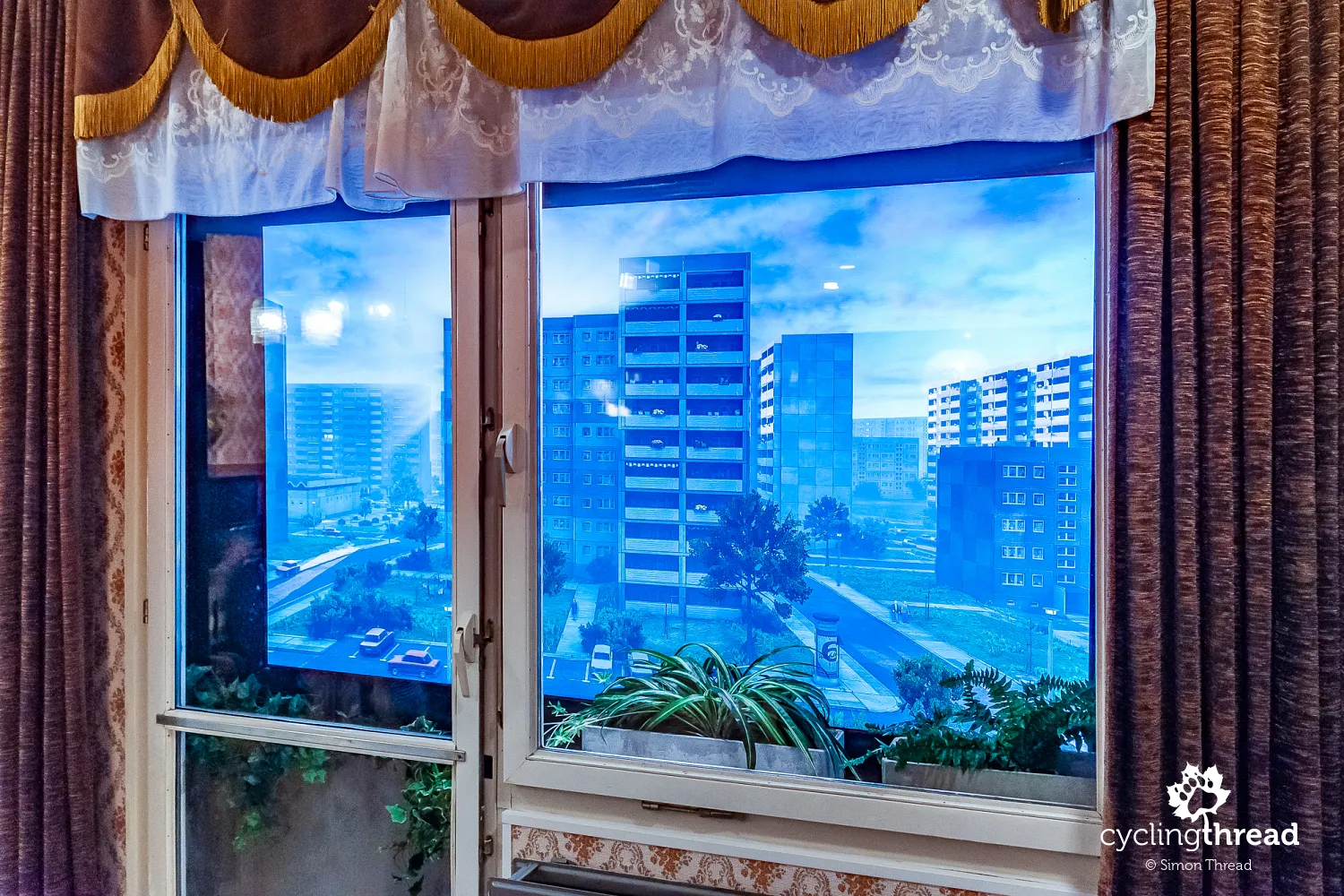
A&O Berlin Hauptbahnhof - a convenient base in Berlin
When it comes to sightseeing convenience, the location of your accommodation always plays a key role. Due to our daily use of S-Bahn trains to reach different stages of the Berlin Wall Trail, the proximity to attractions in the city center, and the ease of arriving and departing by train, we chose the newly built A&O Berlin Hauptbahnhof hostel as our multi-day base. Located just a 3-minute bike ride from the Main Train Station, the hostel also offers a quieter hotel section with simply furnished rooms, providing affordable accommodation for a few days' stay. We stayed at another A&O property during our trip along the Alpe-Adria route. Other noteworthy accommodations in Berlin you can find on a popular booking platform.
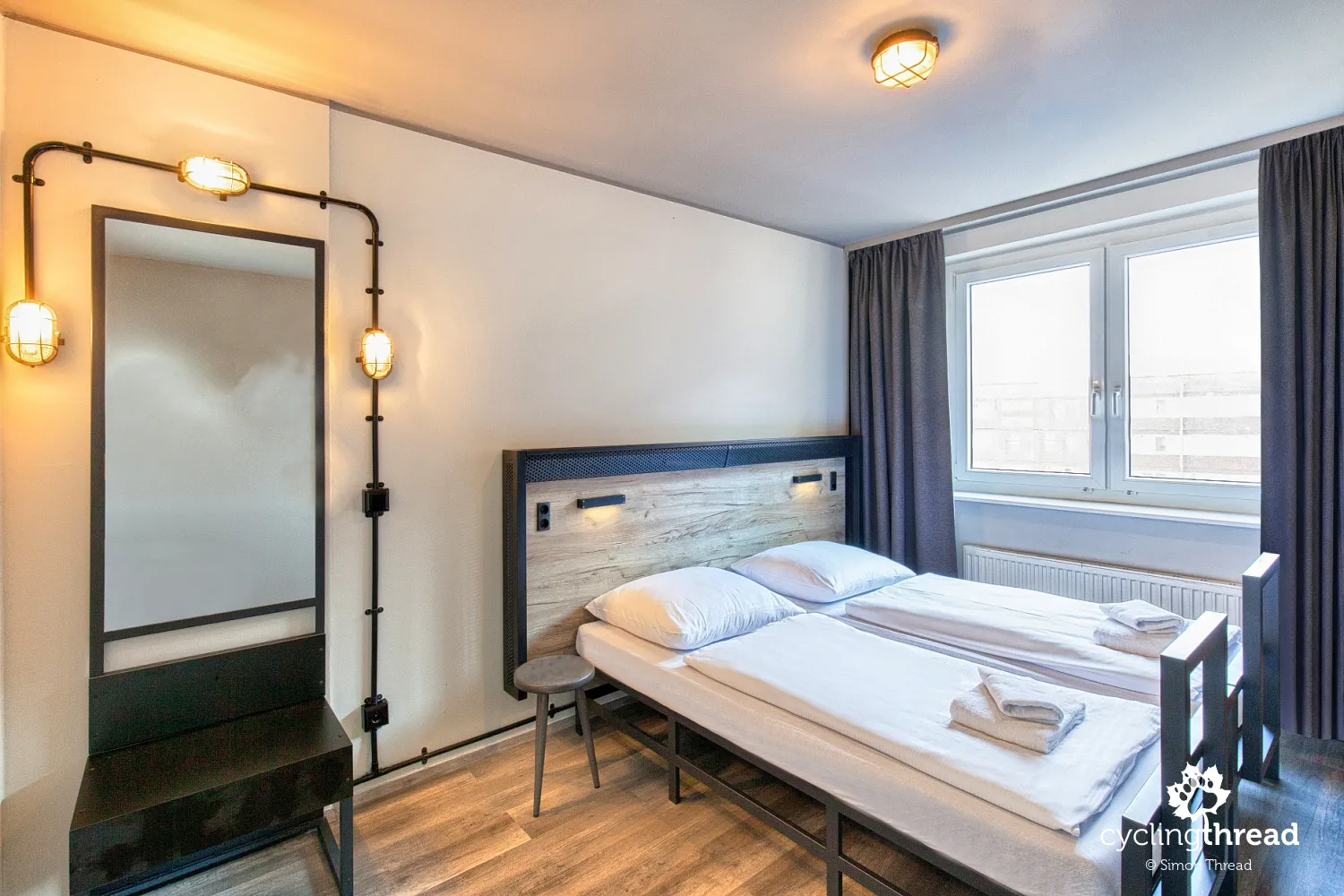
Delicious German cuisine in Berlin
During our stay in Berlin, it was impossible to resist replenishing burned calories at restaurants serving traditional German cuisine. Perhaps our most memorable afternoon was spent at the Augustiner restaurant located at Gendarmenmarkt, one of the most beautiful squares in Berlin. Our visit was special not only because of the delicious pork knuckle with its crispy, roasted skin... mmm..., but also due to the Polish Cup final in football being played that day in Warsaw. When Lechia Gdańsk scored a goal securing a long-awaited trophy for the city, everyone in the friendly restaurant found out about it. Our excitement fit perfectly into the relaxed atmosphere of the place, and soon I had several waiters watching the replay of the winning goal on my phone with me. Berlin turned out to be a very lucky city for us.
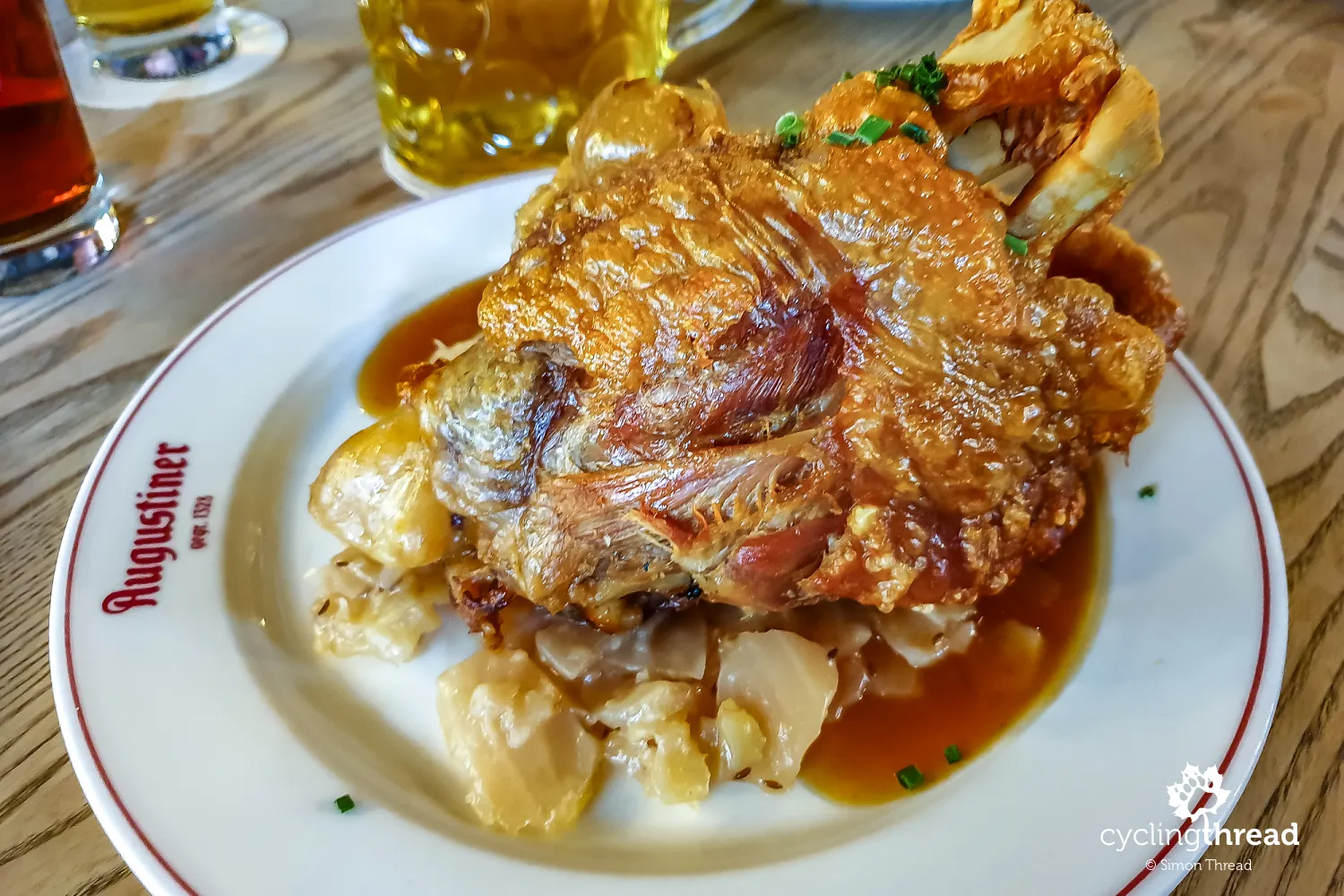
... and the most popular dish - Currywurst
However, the most famous dish in Berlin, popular among both tourists and locals, is, of course, Currywurst - grilled or fried sausage, cut into slices, sprinkled with curry powder, and topped with tomato sauce and mayonnaise. As seen in the photo, fries are often served alongside. Interestingly, its history dates back to 1949 when a German woman, Herta Heuwer, began selling it at her stall in Charlottenburg, using ingredients partly from leftover American wartime supplies. Currywurst can be found on almost every street in Berlin, probably in every German city, and at the site of Herta Heuwer's stall, a commemorative plaque now stands. Berlin even has a museum dedicated to Currywurst.

Cycling routes around Berlin
The Berlin Wall Trail is, of course, not the only cycling trail passing through Berlin and its surroundings. Other German cycling routes in the area can be spotted by observing the colorful signs appearing under road signs. Among the most interesting ones we noticed was the intimate Havel River cycling route, a section of which we rode two years ago in Brandenburg and which we still consider one of our most enjoyable routes in Germany. It’s worth remembering that all long-distance cycling routes in Germany feature very good, solid surfaces and safe paths away from car traffic. Most are also suitable for multi-day family cycling trips with children.
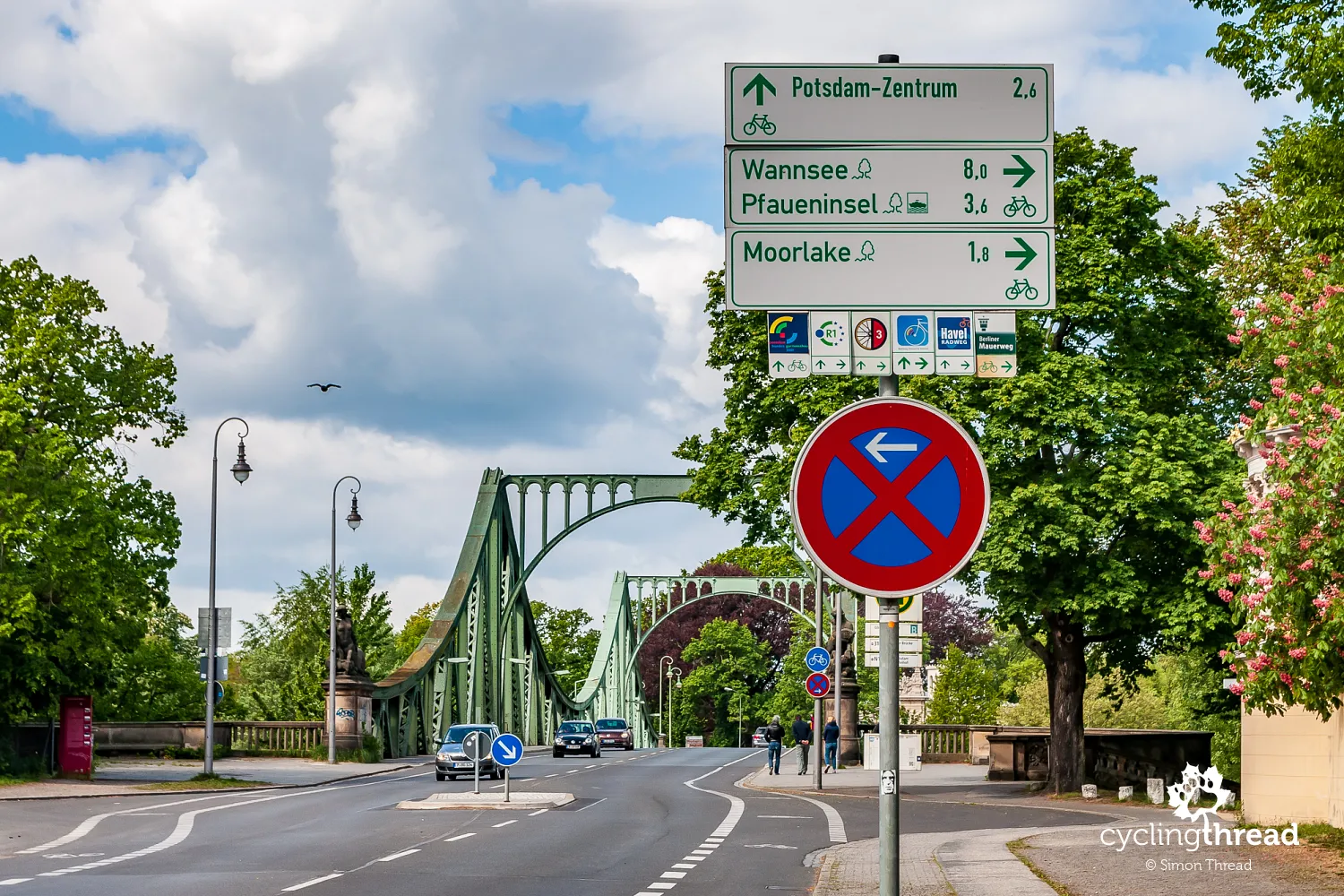
Direct trains from many directions
During our trip and while writing this article, there were at least five direct trains connecting Berlin with various major cities. Our choice remains the convenient morning connection from Poznań to Berlin, but similarly, travelers can reach the German capital directly from cities such as Amsterdam, Hamburg, Frankfurt and Warsaw. Additionally, new connections are continuously being introduced, improving accessibility and making Berlin an easy weekend destination from different parts of Europe. As far as we know, bicycles can be transported on all these trains, of course, for an additional fee.
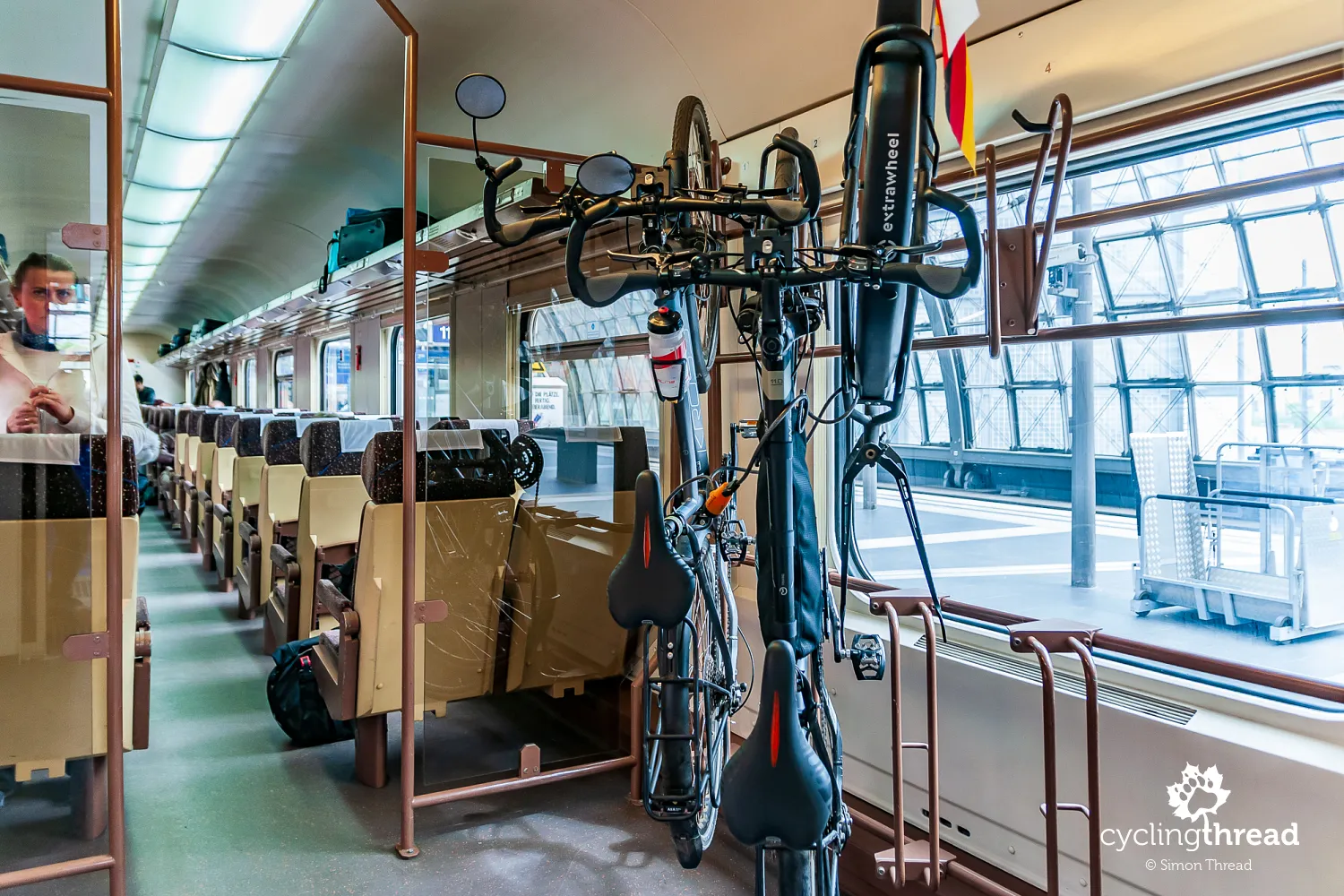
Berlin - diverse, open, and... bike-friendly
Berlin never fails to impress us. Constantly expanding, incredibly diverse, open, and... so very bike-friendly. I even enjoy the train ride into Berlin, that recurring sequence of events: passing through the Brandenburg forests, where we have also cycled, then the suburbs and the area of the former East Berlin, until the Spree River appears alongside the train, offering a brief showcase of Berlin’s impressive and diverse architecture. The train stops at the modern, multi-level Main Train Station in the city center - a city that shapes the future of contemporary Europe and where everyone seems to have a chance to find a place for themselves, even during a short weekend trip.
Back to top


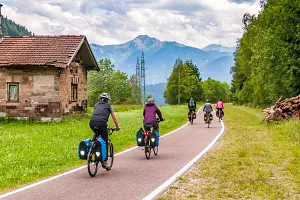

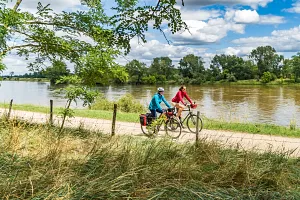
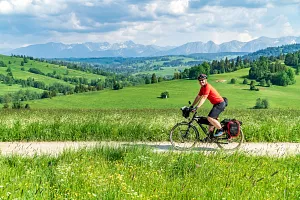
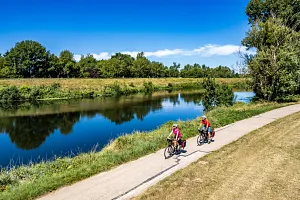
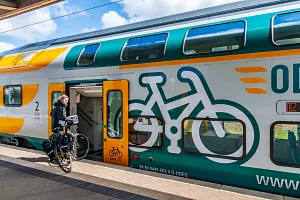
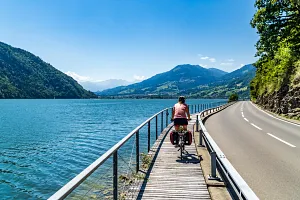
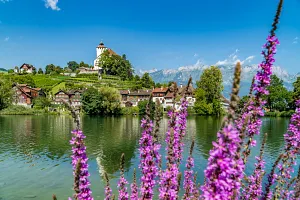
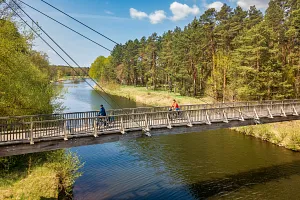
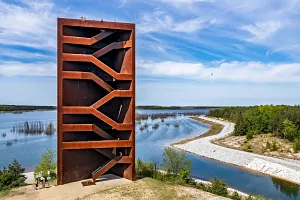
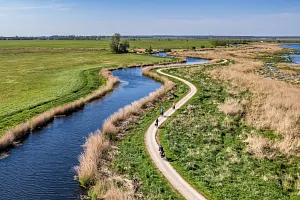
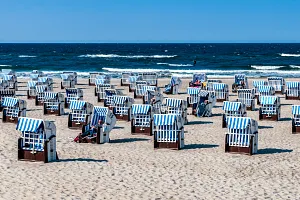
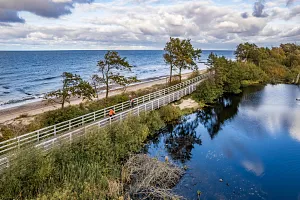
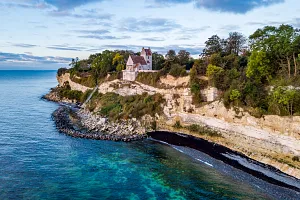
Your Comments
Add new comment